Law of Accelerating Returns
description: perceived increase in the rate of technological change throughout history
49 results

The Age of Spiritual Machines: When Computers Exceed Human Intelligence
by
Ray Kurzweil
Published 31 Dec 1998
And that is indeed what we experience. But it is the opposite spiral of the Law of Time and Chaos that is the most important and relevant for our purposes. Consider the inverse sublaw, which I call the Law of Accelerating Returns: The Law of Accelerating Returns: As order exponentially increases, time exponentially speeds up (that is, the time interval between salient events grows shorter as time passes). The Law of Accelerating Returns (to distinguish it from a better-known law in which returns diminish) applies specifically to evolutionary processes. In an evolutionary process, it is order—the opposite of chaos—that is increasing.
…
Moore’s Law came along in 1958 just when it was needed and will have done its sixty years of service by 2018, a rather long period of time for a paradigm nowadays. Unlike Moore’s Law, however, the Law of Accelerating Returns is not a temporary methodology. It is a basic attribute of the nature of time and chaos-a sublaw of the Law of Time and Chaos—and describes a wide range of apparently divergent phenomena and trends. In accordance with the Law of Accelerating Returns, another computational technology will pick up where Moore’s Law will have left off, without missing a beat. Most Exponential Trends Hit a Wall ... but Not This One A frequent criticism of predictions of the future is that they rely on mindless extrapolation of current trends without consideration of forces that may terminate or alter that trend.
…
And there are more than enough other new computing technologies waiting in the wings—nanotube, optical, crystalline, DNA, and quantum (which we’ll visit in chapter 6, “Building New Brains”)—to keep the Law of Accelerating Returns going in the world of computation for a very long time. A Planetary Affair The introduction of technology on Earth is not merely the private affair of one of the Earth’s innumerable species. It is a pivotal event in the history of the planet. Evolution’s grandest creation—human intelligence—is providing the means for the next stage of evolution, which is technology. The emergence of technology is predicted by the Law of Accelerating Returns. The Homo sapiens sapiens subspecies emerged only tens of thousands of years after its human forebears.

The Singularity Is Near: When Humans Transcend Biology
by
Ray Kurzweil
Published 14 Jul 2005
It's the economic imperative of a competitive marketplace that is the primary force driving technology forward and fueling the law of accelerating returns. In turn, the law of accelerating returns is transforming economic relationships. Economic imperative is the equivalent of survival in biological evolution. We are moving toward more intelligent and smaller machines as the result of myriad small advances, each with its own particular economic justification. Machines that can more precisely carry out their missions have increased value, which explains why they are being built. There are tens of thousands of projects that are advancing the various aspects of the law of accelerating returns in diverse incremental ways.
…
—JOHN SMART1 T he ongoing acceleration of technology is the implication and inevitable result of what I call the law of accelerating returns, which describes the acceleration of the pace of and the exponential growth of the products of an evolutionary process. These products include, in particular, information-bearing technologies such as computation, and their acceleration extends substantially beyond the predictions made by what has become known as Moore's Law. The Singularity is the inexorable result of the law of accelerating returns, so it is important that we examine the nature of this evolutionary process. The Nature of Order.
…
As biological evolution moved toward humanoids, the objective itself evolved to the ability to outthink adversaries and to manipulate the environment accordingly. It may appear that this aspect of the law of accelerating returns contradicts the second law of thermodynamics, which implies that entropy (randomness in a closed system) cannot decrease and, therefore, generally increases.10 However, the law of accelerating returns pertains to evolution, which is not a closed system. It takes place amid great chaos and indeed depends on the disorder in its midst, from which it draws its options for diversity. And from these options, an evolutionary process continually prunes its choices to create ever greater order.
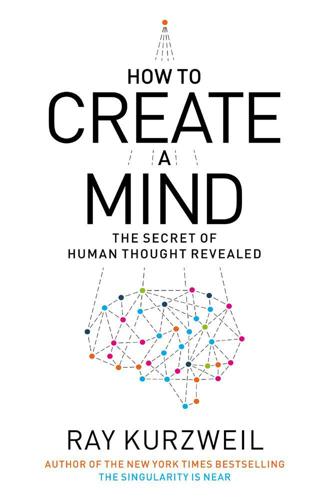
How to Create a Mind: The Secret of Human Thought Revealed
by
Ray Kurzweil
Published 13 Nov 2012
As I have pointed out, there is a dramatic difference between linear and exponential progressions (forty steps linearly is forty, but exponentially is a trillion), which accounts for why my predictions stemming from the law of accelerating returns seem surprising to many observers at first. We have to train ourselves to think exponentially. When it comes to information technologies, it is the right way to think. The quintessential example of the law of accelerating returns is the perfectly smooth, doubly exponential growth of the price/performance of computation, which has held steady for 110 years through two world wars, the Great Depression, the Cold War, the collapse of the Soviet Union, the reemergence of China, the recent financial crisis, and all of the other notable events of the late nineteenth, twentieth, and early twenty-first centuries.
…
I now have a public track record of more than a quarter of a century of predictions based on the law of accelerating returns, starting with those presented in The Age of Intelligent Machines, which I wrote in the mid-1980s. Examples of accurate predictions from that book include: the emergence in the mid- to late 1990s of a vast worldwide web of communications tying together people around the world to one another and to all human knowledge; a great wave of democratization emerging from this decentralized communication network, sweeping away the Soviet Union; the defeat of the world chess champion by 1998; and many others. I described the law of accelerating returns, as it is applied to computation, extensively in The Age of Spiritual Machines, where I provided a century of data showing the doubly exponential progression of the price/performance of computation through 1998.
…
(TV show), 6–7, 108, 157–58, 160, 165, 166, 167, 168, 169, 172, 178, 232–33, 270 Joyce, James, 55 Kasparov, Garry, 39, 166 K Computer, 196 knowledge bases: AI systems and, 4, 6–7, 170–71, 246, 247 of digital neocortex, 177 exponential growth of, 3 as inherently hierarchical, 220 language and, 3 professional, 39–40 as recursively linked ideas, 3 Kodandaramaiah, Suhasa, 126 Koene, Randal, 89 Koltsov, Nikolai, 16 Kotler, Steven, 278 KurzweilAI.net, 161 Kurzweil Applied Intelligence, 144 Kurzweil Computer Products, 122 Kurzweil Voice, 160 lamina 1 neurons, 97 language: chimpanzees and, 3, 41 and growth of knowledge base, 3 hierarchical nature of, 56, 159, 162, 163 as metaphor, 115 as translation of thinking, 56, 68 language software, 51, 72–73, 92, 115–16, 122–23, 144–45, 145, 156, 157–72, 174, 270 expert managers in, 166–67 hand-coded rules in, 164–65, 166, 168 HHMMs in, 167–68 hierarchical systems in, 162–65 Larson, Gary, 277 “Last Voyage of the Ghost, The” (García Márquez), 3–4 lateral geniculate nucleus, 95, 100 law of accelerating returns (LOAR), 4, 6, 7, 41, 123 as applied to human brain, 261–63, 263, 264, 265 biomedicine and, 251, 252, 253 communication technology and, 253, 254 computation capacity and, 281, 316n–19n information technology and, 4, 249–57, 252, 257, 258, 259, 260, 261, 261 objections to, 266–82 predictions based on, 256–57, 257, 258, 259, 260, 261 and unlikelihood of other intelligent species, 5 “Law of Accelerating Returns, The” (Kurzweil), 267 laws of thermodynamics, 37, 267 learning, 61–65, 122, 155, 273–74 conditionals in, 65 and difficulty of grasping more than one conceptual level at a time, 65 in digital neocortex, 127–28, 175–76 environment and, 119 Hebbian, 80 hierarchical, 164, 195, 197 in neural nets, 132–33 neurological basis of, 79–80 pattern recognition as basic unit of, 80–81 of patterns, 63–64, 90 recognition as simultaneous with, 63 simultaneous processing in, 63, 146 legal systems, consciousness as basis of, 212–13 Leibniz, Gottfried Wilhelm, 34, 223 Lenat, Douglas, 162 Leviathan (Hobbes), 278 Lewis, Al, 93 Libet, Benjamin, 229–30, 231, 234 light, speed of, 281 Einstein’s thought experiments on, 18–23 linear programming, 64 LISP (LISt Processor), 153–55, 163 pattern recognition modules compared with, 154, 155 Lloyd, Seth, 316n, 317n Loebner, Hugh, 298n Loebner Prize, 298n logic, 38–39 logical positivism, 220 logic gates, 185 Lois, George, 113 love, 117–20 biochemical changes associated with, 118–19 evolutionary goals and, 119 pattern recognition modules and, 119–20 “Love Is the Drug,” 118 Lovelace, Ada Byron, Countess of, 190, 191 lucid dreaming, 72, 287n–88n Lyell, Charles, 14–15, 114, 177 McCarthy, John, 153 McClelland, Shearwood, 225 McGinn, Colin, 200 magnetic data storage, growth in, 261, 301n–3n magnetoencephalography, 129 Manchester Small-Scale Experimental Machine, 189 Mandelbrot set, 10–11, 10 Marconi, Guglielmo, 253 Mark 1 Perceptron, 131–32, 134, 135, 189 Markov, Andrei Andreyevich, 143 Markram, Henry, 80–82, 124–27, 129 mass equivalent, of energy, 22–23 Mathematica, 171 “Mathematical Theory of Communication, A” (Shannon), 184 Mauchly, John, 189 Maudsley, Henry, 224 Maxwell, James Clerk, 20 Maxwell, Robert, 225 Mead, Carver, 194–95 medial geniculate nucleus, 97, 100 medicine, AI and, 6–7, 39, 108, 156, 160–61, 168 memes: consciousness as, 211, 235 free will as, 235 memory, in computers, 185, 259, 260, 268, 301n–3n, 306n–7n memory, memories, human: abstract concepts in, 58–59 capacity of, 192–93 computers as extensions of, 169 consciousness vs., 28–29, 206–7, 217 dimming of, 29, 59 hippocampus and, 101–2 as ordered sequences of patterns, 27–29, 54 redundancy of, 59 unexpected recall of, 31–32, 54, 68–69 working, 101 Menabrea, Luigi, 190 metacognition, 200, 201 metaphors, 14–15, 113–17, 176–77 Michelson, Albert, 18, 19, 36, 114 Michelson-Morley experiment, 19, 36, 114 microtubules, 206, 207, 208, 274 Miescher, Friedrich, 16 mind, 11 pattern recognition theory of (PRTM), 5–6, 8, 11, 34–74, 79, 80, 86, 92, 111, 172, 217 thought experiments on, 199–247 mind-body problem, 221 Minsky, Marvin, 62, 133–35, 134, 199, 228 MIT Artificial Intelligence Laboratory, 134 MIT Picower Institute for Learning and Memory, 101 MobilEye, 159 modeling, complexity and, 37–38 Modha, Dharmendra, 128, 195, 271–72 momentum, 20–21 conservation of, 21–22 Money, John William, 118, 119 montane vole, 119 mood, regulation of, 106 Moore, Gordon, 251 Moore’s law, 251, 255, 268 moral intelligence, 201 moral systems, consciousness as basis of, 212–13 Moravec, Hans, 196 Morley, Edward, 18, 19, 36, 114 Moskovitz, Dustin, 156 motor cortex, 36, 99 motor nerves, 99 Mountcastle, Vernon, 36, 37, 94 Mozart, Leopold, 111 Mozart, Wolfgang Amadeus, 111, 112 MRI (magnetic resonance imaging), 129 spatial resolution of, 262–65, 263, 309n MT (V5) visual cortex region, 83, 95 Muckli, Lars, 225 music, as universal to human culture, 62 mutations, simulated, 148 names, recalling, 32 National Institutes of Health, 129 natural selection, 76 geologic process as metaphor for, 14–15, 114, 177 see also evolution Nature, 94 nematode nervous system, simulation of, 124 neocortex, 3, 7, 77, 78 AI reverse-engineering of, see neocortex, digital bidirectional flow of information in, 85–86, 91 evolution of, 35–36 expansion of, through AI, 172, 266–72, 276 expansion of, through collaboration, 116 hierarchical order of, 41–53 learning process of, see learning linear organization of, 250 as metaphor machine, 113 neural leakage in, 150–51 old brain as modulated by, 93–94, 105, 108 one-dimensional representations of multidimensional data in, 53, 66, 91, 141–42 pattern recognition in, see pattern recognition pattern recognizers in, see pattern recognition modules plasticity of, see brain plasticity prediction by, 50–51, 52, 58, 60, 66–67, 250 PRTM as basic algorithm of, 6 pruning of unused connections in, 83, 90, 143, 174 redundancy in, 9, 224 regular grid structure of, 82–83, 84, 85, 129, 262 sensory input in, 58, 60 simultaneous processing of information in, 193 specific types of patterns associated with regions of, 86–87, 89–90, 91, 111, 152 structural simplicity of, 11 structural uniformity of, 36–37 structure of, 35–37, 38, 75–92 as survival mechanism, 79, 250 thalamus as gateway to, 100–101 total capacity of, 40, 280 total number of neurons in, 230 unconscious activity in, 228, 231, 233 unified model of, 24, 34–74 as unique to mammalian brain, 93, 286n universal processing algorithm of, 86, 88, 90–91, 152, 272 see also cerebral cortex neocortex, digital, 6–8, 41, 116–17, 121–78, 195 benefits of, 123–24, 247 bidirectional flow of information in, 173 as capable of being copied, 247 critical thinking module for, 176, 197 as extension of human brain, 172, 276 HHMMs in, 174–75 hierarchical structure of, 173 knowledge bases of, 177 learning in, 127–28, 175–76 metaphor search module in, 176–77 moral education of, 177–78 pattern redundancy in, 175 simultaneous searching in, 177 structure of, 172–78 virtual neural connections in, 173–74 neocortical columns, 36–37, 38, 90, 124–25 nervous systems, 2 neural circuits, unreliability of, 185 neural implants, 243, 245 neural nets, 131–35, 144, 155 algorithm for, 291n–97n feedforward, 134, 135 learning in, 132–33 neural processing: digital emulation of, 195–97 massive parallelism of, 192, 193, 195 speed of, 192, 195 neuromorphic chips, 194–95, 196 neuromuscular junction, 99 neurons, 2, 36, 38, 43, 80, 172 neurotransmitters, 105–7 new brain, see neocortex Newell, Allen, 181 New Kind of Science, A (Wolfram), 236, 239 Newton, Isaac, 94 Nietzsche, Friedrich, 117 nonbiological systems, as capable of being copied, 247 nondestructive imaging techniques, 127, 129, 264, 312n–13n nonmammals, reasoning by, 286n noradrenaline, 107 norepinephrine, 118 Notes from Underground (Dostoevsky), 199 Nuance Speech Technologies, 6–7, 108, 122, 152, 161, 162, 168 nucleus accumbens, 77, 105 Numenta, 156 NuPIC, 156 obsessive-compulsive disorder, 118 occipital lobe, 36 old brain, 63, 71, 90, 93–108 neocortex as modulator of, 93–94, 105, 108 sensory pathway in, 94–98 olfactory system, 100 Oluseun, Oluseyi, 204 OmniPage, 122 One Hundred Years of Solitude (García Márquez), 283n–85n On Intelligence (Hawkins and Blakeslee), 73, 156 On the Origin of Species (Darwin), 15–16 optical character recognition (OCR), 122 optic nerve, 95, 100 channels of, 94–95, 96 organisms, simulated, evolution of, 147–53 overfitting problem, 150 oxytocin, 119 pancreas, 37 panprotopsychism, 203, 213 Papert, Seymour, 134–35, 134 parameters, in pattern recognition: “God,” 147 importance, 42, 48–49, 60, 66, 67 size, 42, 49–50, 60, 61, 66, 67, 73–74, 91–92, 173 size variability, 42, 49–50, 67, 73–74, 91–92 Parker, Sean, 156 Parkinson’s disease, 243, 245 particle physics, see quantum mechanics Pascal, Blaise, 117 patch-clamp robotics, 125–26, 126 pattern recognition, 195 of abstract concepts, 58–59 as based on experience, 50, 90, 273–74 as basic unit of learning, 80–81 bidirectional flow of information in, 52, 58, 68 distortions and, 30 eye movement and, 73 as hierarchical, 33, 90, 138, 142 of images, 48 invariance and, see invariance, in pattern recognition learning as simultaneous with, 63 list combining in, 60–61 in neocortex, see pattern recognition modules redundancy in, 39–40, 57, 60, 64, 185 pattern recognition modules, 35–41, 42, 90, 198 autoassociation in, 60–61 axons of, 42, 43, 66, 67, 113, 173 bidirectional flow of information to and from thalamus, 100–101 dendrites of, 42, 43, 66, 67 digital, 172–73, 175, 195 expectation (excitatory) signals in, 42, 52, 54, 60, 67, 73, 85, 91, 100, 112, 173, 175, 196–97 genetically determined structure of, 80 “God parameter” in, 147 importance parameters in, 42, 48–49, 60, 66, 67 inhibitory signals in, 42, 52–53, 67, 85, 91, 100, 173 input in, 41–42, 42, 53–59 love and, 119–20 neural connections between, 90 as neuronal assemblies, 80–81 one-dimensional representation of multidimensional data in, 53, 66, 91, 141–42 prediction by, 50–51, 52, 58, 60, 66–67 redundancy of, 42, 43, 48, 91 sequential processing of information by, 266 simultaneous firings of, 57–58, 57, 146 size parameters in, 42, 49–50, 60, 61, 66, 67, 73–74, 91–92, 173 size variability parameters in, 42, 67, 73–74, 91–92, 173 of sounds, 48 thresholds of, 48, 52–53, 60, 66, 67, 111–12, 173 total number of, 38, 40, 41, 113, 123, 280 universal algorithm of, 111, 275 pattern recognition theory of mind (PRTM), 5–6, 8, 11, 34–74, 79, 80, 86, 92, 111, 172, 217 patterns: hierarchical ordering of, 41–53 higher-level patterns attached to, 43, 45, 66, 67 input in, 41, 42, 44, 66, 67 learning of, 63–64, 90 name of, 42–43 output of, 42, 44, 66, 67 redundancy and, 64 specific areas of neocortex associated with, 86–87, 89–90, 91, 111, 152 storing of, 64–65 structure of, 41–53 Patterns, Inc., 156 Pavlov, Ivan Petrovich, 216 Penrose, Roger, 207–8, 274 perceptions, as influenced by expectations and interpretations, 31 perceptrons, 131–35 Perceptrons (Minsky and Papert), 134–35, 134 phenylethylamine, 118 Philosophical Investigations (Wittgenstein), 221 phonemes, 61, 135, 137, 146, 152 photons, 20–21 physics, 37 computational capacity and, 281, 316n–19n laws of, 37, 267 standard model of, 2 see also quantum mechanics Pinker, Steven, 76–77, 278 pituitary gland, 77 Plato, 212, 221, 231 pleasure, in old and new brains, 104–8 Poggio, Tomaso, 85, 159 posterior ventromedial nucleus (VMpo), 99–100, 99 prairie vole, 119 predictable outcomes, determined outcomes vs., 26, 239 President’s Council of Advisors on Science and Technology, 269 price/performance, of computation, 4–5, 250–51, 257, 257, 267–68, 301n–3n Principia Mathematica (Russell and Whitehead), 181 probability fields, 218–19, 235–36 professional knowledge, 39–40 proteins, reverse-engineering of, 4–5 qualia, 203–5, 210, 211 quality of life, perception of, 277–78 quantum computing, 207–9, 274 quantum mechanics, 218–19 observation in, 218–19, 235–36 randomness vs. determinism in, 236 Quinlan, Karen Ann, 101 Ramachandran, Vilayanur Subramanian “Rama,” 230 random access memory: growth in, 259, 260, 301n–3n, 306n–7n three-dimensional, 268 randomness, determinism and, 236 rationalization, see confabulation reality, hierarchical nature of, 4, 56, 90, 94, 172 recursion, 3, 7–8, 56, 65, 91, 153, 156, 177, 188 “Red” (Oluseum), 204 redundancy, 9, 39–40, 64, 184, 185, 197, 224 in genome, 271, 314n, 315n of memories, 59 of pattern recognition modules, 42, 43, 48, 91 thinking and, 57 religious ecstacy, 118 “Report to the President and Congress, Designing a Digital Future” (President’s Council of Advisors on Science and Technology), 269 retina, 95 reverse-engineering: of biological systems, 4–5 of human brain, see brain, human, computer emulation of; neocortex, digital Rosenblatt, Frank, 131, 133, 134, 135, 191 Roska, Boton, 94 Rothblatt, Martine, 278 routine tasks, as series of hierarchical steps, 32–33 Rowling, J.

Our Final Invention: Artificial Intelligence and the End of the Human Era
by
James Barrat
Published 30 Sep 2013
This juggernaut of projections and analysis is Kurzweil’s, and it’s the key to understanding the third and reigning definition of the singularity—his. It’s at the heart of Kurzweil’s Law of Accelerating Returns, a theory about technological progress that Kurzweil didn’t invent, but pointed out, in much the same way Good anticipated the intelligence explosion and Vinge warned of a coming singularity. What the Law of Accelerating Returns means is that the projections and advances we’re discussing in this book are hurtling toward us like a freight train that doubles its speed every mile, then doubles again. It’s very hard to perceive how quickly it will get here, but suffice it to say that if that train were traveling twenty miles an hour by the end of the first mile, just fifteen miles later it’ll be traveling more than 65,000 miles an hour.
…
And, it’s important to note Kurzweil’s projections aren’t just about advances in technology hardware, such as what’s inside a new iPhone, but advances in the technology arts, like developing a unified theory of artificial intelligence. But here’s where Kurzweil and I differ. Instead of leading to a kind of paradise, as Kurzweil’s aggregate projections assert, I believe the Law of Accelerating Returns describes the shortest possible distance between our lives as they are and the end of the human era. Chapter Nine The Law of Accelerating Returns Computing is undergoing the most remarkable transformation since the invention of the PC. The innovation of the next decade is going to outstrip the innovation of the past three combined. —Paul Otellini, CEO of Intel With his books The Age of Spiritual Machines: When Computers Exceed Human Intelligence and The Singularity Is Near, Ray Kurzweil commandeered the word “singularity” and changed its meaning to that of a bright, hopeful period of human history, which his tools of extrapolation let him see with remarkable precision.
…
Google search engine Google X Granger, Richard Grassie, William Greaves, Mark Grossberg, Steven grounding problem GUI (Graphical User Interface) hackers Hawking, Stephen Hawkins, Jeff Hebb, Donald heuristics Hibbard, Bill high-frequency trading systems (HFTs) Hillis, Danny Holtzman, Golde Horvitz, Eric Hughes, James I, Robot (Asimov) IA, see intelligence augmentation IBM Blue Brain Deep Blue SyNAPSE Watson immortality incomprehensibility Ings, Simon inscrutability paradox Institute for Ethics and Emerging Technologies (IEET) integrated circuits intelligence embodiment and emerging from Internet knowledge and intelligence augmentation (IA) intelligence explosion economics and financial markets and hard takeoff in limiting factors to Moore’s law and risks of, see risks of artificial intelligence self-awareness and, see self-awareness self-improvement and, see self-improvement software complexity and system space for Internet intelligence emerging from security and iPad iPhone Siri Iran iRobot Jennings, Ken Jeopardy! Joy, Bill Jurvetson, Steve Kahneman, Daniel Kasparov, Gary Kelly, Kevin Koza, John Kroft, Steve Kurzweil, Ray global warming problem as viewed by Google and Law of Accelerating Returns of Singularity and Langner, Ralph Lanier, Jaron Law of Accelerating Returns (LOAR) Lay, Kenneth Leibnitz, Gottfried Lenat, Douglas Lewis, H. W. LIDA (Learning Intelligent Distributed Agent) Lifeboat Foundation Lipson, Hod Loebner, Hugh Lynn, William J., III Machine Intelligence Research Institute (MIRI) Singularity Summit machine learning Madoff, Bernie malware Mazzafro, Joe McCarthy, John McGurk, Sean military battlefield robots and drones DARPA, see DARPA energy infrastructure and nuclear weapons, see nuclear weapons Mind Children (Moravec) Minsky, Marvin Mitchell, Tom mobile phones see also iPhone Monster Cat Moore, Gordon Moore’s Law morality see also Friendly AI Moravec, Hans Moravec’s Paradox mortality, see immortality mortgage crisis Mutually Assured Destruction (MAD) nano assemblers nanotechnology “gray goo” problem and natural language processing (NLP) natural selection Nekomata (Monster Cat) NELL (Never-Ending-Language-Learning system) neural networks neurons New Scientist New York Times Newman, Max Newton, Isaac Ng, Andrew 9/11 attacks Normal Accidents: Living with High-Risk Technologies (Perrow) normalcy bias North Korea Norvig, Peter Novamente nuclear fission nuclear power plant disasters nuclear weapons of Iran Numenta Ohana, Steve Olympic Games (cyberwar campaign) Omohundro, Stephen OpenCog Otellini, Paul Page, Larry paper clip maximizer scenario parallel processing pattern recognition Pendleton, Leslie Perceptron Perrow, Charles Piaget, Jean power grid Precautionary Principle programming bad evolutionary genetic ordinary self-improving, see self-improvement Rackspace rational agent theory of economics recombinant DNA Reflections on Artificial Intelligence (Whitby) resource acquisition risks of artificial intelligence apoptotic systems and Asilomar Guidelines and Busy Child scenario and, see Busy Child scenario defenses against lack of dialogue about malicious AI Precautionary Principle and runaway AI Safe-AI Scaffolding Approach and Stuxnet and unintended consequences robots, robotics Asimov’s Three Laws of in dangerous and service jobs in sportswriting Rosenblatt, Frank Rowling, J.

The Singularity Is Nearer: When We Merge with AI
by
Ray Kurzweil
Published 25 Jun 2024
My emphasis in this chapter is specifically on the exponential nature of this progress, how the law of accelerating returns is the fundamental driver of many individual trends we see, and how the result will be a dramatic improvement of most aspects of life in the very near future—not just in the digital realm. Before we explore specific examples in detail, it’s important to begin with a clear conceptual understanding of this dynamic. My work has sometimes been mischaracterized as claiming that technological change itself is inherently exponential, and that the law of accelerating returns applies to all forms of innovation. That’s not my view.
…
See Turing test imitative generalization, 279 immortality, 94, 257 immune checkpoint inhibitors, 239 immune system, 186, 190, 191–92, 237, 260, 271, 276–77 immunotherapies, 190, 227, 239, 260 income, 111–12, 137–47, 153 US average per hour worked, 145, 145 US per capita, 144, 144–45 indeterminism, 82, 86–88 India education and literacy, 125, 125–26, 127 nuclear weapons, 269 poverty, 117, 137 induced pluripotent stem (iPS), 190–91 Industrial Revolution, 146, 198–99, 202, 203, 205, 209–10 inequality, 193–94 infectious diseases, 16, 242–43 inferential reasoning, 51–52 inflation, 3, 29, 210, 214 influencers, 218 information technologies (IT), 211–14 exponential growth of, 113–14, 121–22, 135, 142, 164, 168–69, 172, 194, 235 law of accelerating returns. See law of accelerating returns price and power, 139, 153–54, 167, 168–69, 194, 211–13 spread of democracy and, 159–60 inkjet printers, 183 inner misalignment, 279 insects, 77 in silico, 190–91, 241 Instagram, 218 Institute for Health Metrics and Evaluation, 177 insulin, 192, 259 integrated circuits, 40, 168 Intel, 40 Intellec 8, 165, 301–2 intellectual property (IP), 186 intelligence artificial.
…
Meanwhile, the cost to sequence a human’s genome has fallen by about 99.997 percent, and neural networks have begun unlocking major medical discoveries by simulating biology digitally. We’re even gaining the ability to finally connect computers to brains directly. Underlying all these developments is what I call the law of accelerating returns: information technologies like computing get exponentially cheaper because each advance makes it easier to design the next stage of their own evolution. As a result, as I write this, one dollar buys about 11,200 times as much computing power, adjusting for inflation, as it did when The Singularity Is Near hit shelves.
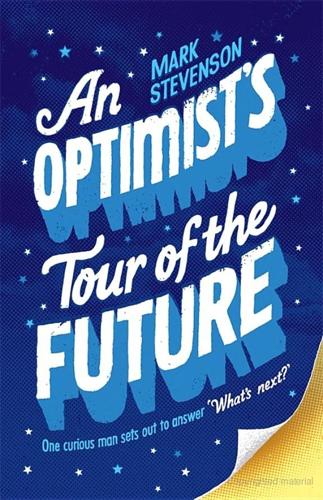
An Optimist's Tour of the Future
by
Mark Stevenson
Published 4 Dec 2010
‘All these concerns that we’re running out of resources would be absolutely true if the law of accelerating returns didn’t exist,’ he says. ‘For instance, people take current trends in the use of energy and just assume nothing’s going to change, ignoring the fact that we have ten thousand times more energy that falls on the Earth from the sun every day than we are using. So if we restrict ourselves to nineteenth-century technologies, these concerns would be correct.’ In other words, the law of accelerating returns should soon see a green energy revolution as solar power keeps doubling its efficiency and halving its cost, leaving fossil fuels standing.
…
If genome sequencing carries on progressing as it has, the ten-dollar genome sequence will soon be with us and one-dollar genome not long after. ‘DNA sequencing costs were halving roughly once per eighteen months (like computer hardware) since the 1970s,’ says Church. ‘But over the past five years it’s been halving every four months.’ (This is just one of a number of startling examples of something called the ‘Law of Accelerating Returns’ that I will come across many times on my travels – and which has some interesting implications for us all.) It’s no exaggeration to say we’re on the brink of a genome data explosion that will revolutionise medicine. The PGP is hugely ambitious in attempting to create a database of a hundred thousand, but imagine a world where we all have a document of our genomes in hand, or where the ability to sequence the genomes held in our individual cells and compare them (as the Sanger Institute’s ground-breaking cancer study did) becomes common practice?
…
The current autocatalytic technologies that goose themselves into exponential growth are infotech (including computers, communications, and artificial intelligence), biotech, and nanotech (which is blurring into biotech). What’s more, they stimulate each other in a mutual catalysis that at times results in hyper-exponential growth of power. Ray calls this phenomenon ‘the law of accelerating returns’ and what it means, he says, is change will come faster than we think. Author Matt Ridley is fascinated by what he calls ‘the rapid, continuous and incessant change that human society experiences in a way no other animal does.’ He puts this down to the fact that human culture allows ideas to meet and interact, something he calls ‘mating minds’ or ‘when ideas have sex.’

More Everything Forever: AI Overlords, Space Empires, and Silicon Valley's Crusade to Control the Fate of Humanity
by
Adam Becker
Published 14 Jun 2025
He has repeatedly claimed that by 2029, an AI will be able to “do everything that any human being can do.”9 By 2045, he says, “we will multiply our effective intelligence a billion fold by merging with the intelligence we have created”—an event Kurzweil and others call “the Singularity.”10 The Singularity gets its name from the point where a mathematical function breaks down, usually because it’s shot off toward infinity. Here, the function is the rate of progress itself. Specifically, Kurzweil claims there is a “law of accelerating returns,” an exponential trend in technological progress proving that the Singularity is not just likely but inevitable, and coming soon. “People intuitively assume that the current rate of progress will continue for future periods. Even for those who have been around long enough to experience how the pace of change increases over time, unexamined intuition leaves one with the impression that change occurs at the same rate that we have experienced most recently,” he writes.
…
Thousands of years ago, the development of pottery furnaces enabled smelting, which enabled metalworking, which ultimately allowed bronze and then steel to replace stone in tools and weapons. More recently, better and better computers have made it easier to design almost anything—including the next generation of computers themselves. Hence Kurzweil’s law of accelerating returns, which he thinks is a fundamental feature of human technology. This is not a merely theoretical argument from Kurzweil. He has collected a set of major technological milestones over the course of human history, and has found that they are coming more and more quickly, matching an exponential trend.
…
It took five thousand years to go from the horse-drawn cart to the car, but less than a century to go from the car to landing on the Moon; there were at least two thousand years between homing pigeons and the telegraph, but only about 130 years between the telegraph and the beginning of the internet. Nor does Kurzweil think that the law of accelerating returns is limited to technology. According to him, exponential trends can be traced back through the deep time of evolution as well. “Exponential growth is a feature of any evolutionary process,” he writes.20 “The evolution of life-forms required billions of years for its first steps (primitive cells, DNA), and then progress accelerated.

The Future Is Faster Than You Think: How Converging Technologies Are Transforming Business, Industries, and Our Lives
by
Peter H. Diamandis
and
Steven Kotler
Published 28 Jan 2020
Even the more modern incarnations: Steven Kotler, Tomorrowland (New Harvest, 2015), pp. 97–105. Converging Technology Moore’s Law: See: https://www.intel.com/content/www/us/en/silicon-innovations/moores-law-technology.html. as a human brain: Ray Kurzweil, How to Create a Mind (Viking, 2012), pp. 179–198. “Law of Accelerating Returns”: Ray Kurzweil, “The Law of Accelerating Returns,” March 7, 2001. See: https://www.kurzweilai.net/the-law-of-accelerating-returns. we use the term “disruptive innovation”: Clayton Christensen, The Innovator’s Dilemma (HarperBusiness, 2000), pp. 15–19. Enter distributed electric propulsion, or DEP for short: Mark Moore, “Distributed Electric Propulsion Aircraft,” Nasa Langley Research Center.
…
In the 1990s, Ray Kurzweil, the director of engineering at Google and Peter’s cofounding partner in Singularity University, discovered that once a technology becomes digital—that is, once it can be programmed in the ones and zeroes of computer code—it hops on the back of Moore’s Law and begins accelerating exponentially. In simple terms, we use our new computers to design even faster new computers, and this creates a positive feedback loop that further accelerates our acceleration—what Kurzweil calls the “Law of Accelerating Returns.” The technologies now accelerating at this rate include some of the most potent innovations we have yet dreamed up: quantum computers, artificial intelligence, robotics, nanotechnology, biotechnology, material science, networks, sensors, 3-D printing, augmented reality, virtual reality, blockchain, and more.
…
Forget about the difference between generations, currently mere months can bring a revolution. Yet our brain—which hasn’t really had a hardware update in two hundred thousand years—wasn’t designed for this scale or speed. And if we struggle to track the growth of singular innovations, we’re downright helpless in the face of converging ones. Put it this way, in “The Law of Accelerating Returns,” Ray Kurzweil did the math and found that we’re going to experience twenty thousand years of technological change over the next one hundred years. Essentially, we’re going from the birth of agriculture to the birth of the internet twice in the next century. This means paradigm-shifting, game-changing, nothing-is-ever-the-same-again breakthroughs—such as affordable aerial ridesharing—will not be an occasional affair.
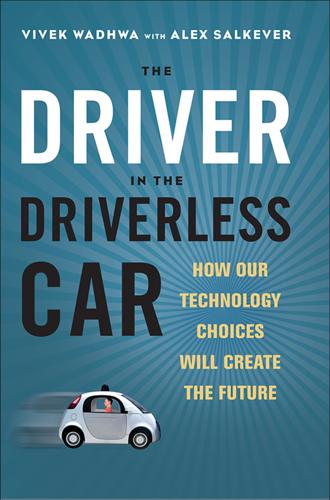
The Driver in the Driverless Car: How Our Technology Choices Will Create the Future
by
Vivek Wadhwa
and
Alex Salkever
Published 2 Apr 2017
We are now creating more information content in a single day than we created in decades or even centuries in the pre-digital era. The key corollary that everyone needs to understand is that as any technology becomes addressable by information technology (i.e., computers), it becomes subject to the law of accelerating returns. For example, now that the human genome has been translated into bits that computers process, genomics becomes de facto an information technology, and the law of accelerating returns applies. When the team headed by biochemist and geneticist J. Craig Venter announced that it had effectively decoded 1 percent of the human genome, many doubters decried the slow progress. Kurzweil declared that Venter’s team was actually halfway there, because, on an exponential curve, the time required to get from 0.01 percent to 1 percent is equal to the time required to get from 1 percent to 100 percent.
…
So much for that ‘new economy’ it was building,” Slate 2 February 2015, http://www.slate.com/blogs/moneybox/2015/02/02/uber_self_driving_cars_autonomous_taxis_aren_t_so_good_for_contractors_in.html (accessed 21 October 2016). 5. Ray Kurzweil, How to Create a Mind: The Secret of Human Thought Revealed, New York: Viking, 2012. 6. Ray Kurzweil, “The law of accelerating returns,” Kurzweil Accelerating Intelligence 7 March 2001, http://www.kurzweilai.net/the-law-of-accelerating-returns (accessed 21 October 2016). 7. Dominic Basulto, “Why Ray Kurzweil’s predictions are right 86% of the time,” Big Think 2012, http://bigthink.com/endless-innovation/why-ray-kurzweils-predictions-are-right-86-of-the-time (accessed 21 October 2016). 8.
…
Others refer often to a book by the most sanguine of all the technologists, noted inventor Ray Kurzweil. Kurzweil, in his book How to Create a Mind: The Secret of Human Thought Revealed, posits: “[F]undamental measures of information technology follow predictable and exponential trajectories.”5 He calls this hypothesis the “law of accelerating returns.”6 We’ve discussed the best-recognized of these trajectories, Moore’s Law. But we are less familiar with the other critical exponential growth curve to emerge in our lifetime: the volume of digital information available on the Internet and, now, through the Internet of Things. Kurzweil measures this curve in “bits per second transmitted on the Internet.”
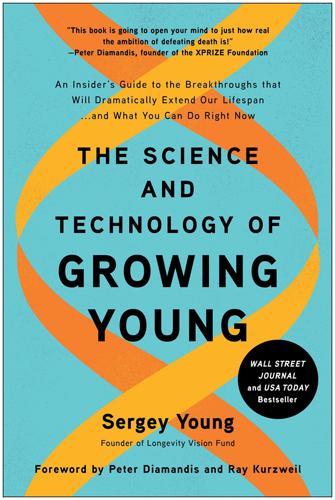
The Science and Technology of Growing Young: An Insider's Guide to the Breakthroughs That Will Dramatically Extend Our Lifespan . . . And What You Can Do Right Now
by
Sergey Young
Published 23 Aug 2021
Change will continue to accelerate until “twenty thousand years of progress (at today’s rate)” will take place within just one hundred years. This is the Law of Accelerating Returns that inventor, entrepreneur, author, and longevity flagbearer Ray Kurzweil introduced in his seminal 1999 book, The Age of Spiritual Machines. (He expanded on the subject further in a free essay at https://www.kurzweilai.net, which ought to be required reading for all high school students through MBA candidates.) The essay importantly establishes that the Law of Accelerating Returns inevitably leads to the Singularity: “Within a few decades, machine intelligence will surpass human intelligence, leading to the Singularity—technological change so rapid and profound it represents a rupture in the fabric of human history.
…
Chapter 10 1National Center for Health Statistics, “Life expectancy at birth, at 65 years of age, and at 75 years of age, by race and sex: United States, selected years 1900–2007,” Centers for Disease Control and Prevention, 2010, https://www.cdc.gov/nchs/data/hus/2010/022.pdf. 2Morbidity and Mortality Weekly Report, “QuickStats: Infant, Neonatal, and Postneonatal Annual Mortality Rates* --- United States, 1940--2005,” Centers for Disease Control and Prevention, last modified April 11, 2008, https://www.cdc.gov/mmwr/preview/mmwrhtml/mm5714a6.htm. 3Ray Kurzweil, “The Law of Accelerating Returns,” Kurzweil Network, last modified March 7, 2001, https://www.kurzweilai.net/the-law-of-accelerating-returns. 4Amit Katwala, “Quantum computers will change the world (if they work),” Wired, last modified March 5, 2020, https://www.wired.co.uk/article/quantum-computing-explained; “Artificial Superintelligence Documentary - AGI,” Science Time, last modified October 12, 2019, https://www.youtube.com/watch?
…
That will allow humans—in theory, at least—to become biologically immortal. When you consider all of the remarkable advances in longevity science that you have learned about in this book, and then imagine how much faster, how much more accurate, and how much more sophisticated this process of advancement will become with quantum computing, AGI, and the Law of Accelerating Returns, longevity escape velocity should not seem nearly as “kooky” as it did initially. Even if true escape velocity is never reached, it’s clear that technology is set to dramatically increase average human life expectancy. The question is, when that happens, will human life ever be the same again?

The Myth of Artificial Intelligence: Why Computers Can't Think the Way We Do
by
Erik J. Larson
Published 5 Apr 2021
(television quiz show), 220–226, 230–231 Jevons, William, 232 Jevons Logical Piano, 232 Jordan, Michael, 258 Kahneman, Daniel, 38, 184–185 Kandel, Eric R., 253, 255–256, 268 Kasparov, Garry, 219 Kavli Foundation, 249, 255 Keilis-Borok, Vladimir, 260 Kelly, Kevin, 42, 241–242, 285–286n7 Kenall, Amye, 249 Kepler, Johannes, 104 kitch, 61–63 knowledge: computational, 178–182; deductive reasoning and, 110–112; infinite amount of, 54; as problem for induction, 124; used in inference, 102 knowledge-based systems, 107 knowledge bases, 178–181 knowledge representation and reasoning (KR&R), 175–176 Koch, Christof, 253, 256 Kundera, Milan, 60–61 Kurzweil, Ray, 35, 38, 84, 274; on consciousness, 78–79; on future of AI, 70, 74; hierarchical pattern recognition theory of, 264–266; on human intelligence, 251; Law of Accelerating Returns of, 42, 47–48, 67; on singularity, 46; on superintelligent machines, 2; on Turing test, 193–194 ladder of causation, 130, 174 Lakatos, Imre, 48 Laney, Doug, 292n5 language. See natural language Lanier, Jaron, 84, 244, 277; on encouraging human intelligence, 239; on erosion of personhood, 270, 272–273 Large Hadron Collider (LHC), 254–255 Law of Accelerating Returns (LOAR), 42, 47–48 learning: definition of, 133; by humans, 141 LeCun, Yann, 75 Legos theory of cognition, 266 Lenat, Doug, 74 Levesque, Hector, 76, 216; on attempts at artificial general intelligence, 175, 186; on Goostman, 192; pronoun disambiguation problem of, 203; on Winograd schemas, 195–196, 198–201 Loebner Prize, 59 Logic Theorist (AI program), 51, 110 Lord of the Rings (novels; Tolkien), 229–230 Lovelace, Ada, 233 machine learning: definition of, 133; empirical constraint in, 146–149; frequency assumption in, 150–154; model saturation in, 155–156; as narrow AI, 141–142; as simulation, 138–140; supervised learning in, 137 machine learning systems, 28–30 MacIntyre, Alasdair, 70–71 Marcus, Gary, 131, 183; on brittleness problem, 126; on correlation and causation, 259; on DeepMind, 127, 161–162; on Google Duplex, 227; on Goostman, 192; on Kurzweil’s pattern recognition theory, 265; on limitations of AI, 75–76; on machine reading comprehension, 195; on superintelligent computers, 81; on Talk to Books, 228 Markram, Henry, 252–254, 273; on AI, 251; on big data versus theory, 256–258, 267, 268; on hive mind, 245–246, 276; Human Brain Project under, 247–250; Legos theory of cognition by, 266; on theory in neuroscience, 261, 262 Marquand, Alan, 232 mathematics: functions in, 139; Gödel’s incompleteness theorems in, 12–14; Hilbert’s challenge in, 14–16; Turing on intuition and ingenuity in, 11 Mathews, Paul M., 256, 267 Mayer-Schönberger, Viktor, 143, 144, 257 McCarthy, John, 50, 107, 285n11 Microsoft Tay (chatbot), 229 Mill, John Stuart, 242, 243 Miller, George, 50 minimax technique, 284n1 Minsky, Marvin, 50, 52, 222 Mitchell, Melanie, 165 Mitchell, Tom, 133 model saturation, 155–156 modus ponens, 108–109, 168–169 monologues, Turing test variation using, 194–195, 212–214 monotonic inference, 167 Mountcastle, Vernon, 264 Mumford, Lewis, 95, 98 “The Murders in the Rue Morgue” (short story, Poe), 89–94 Musk, Elon, 1, 75, 97 narrowness, 226–231 Nash, John, 50 National Resource Council (NRC), 53, 54 natural language: AI understanding to, 228–229; computers’ understanding of, 48, 51–55; context of, 204; continued problems with translation of, 56–57; in speech-driven virtual assistance applications, 227; Turing test of, 50, 194; understanding and meaning of, 205–214; Winograd schemas test of, 195–203 neocortical theories: Hawkins’s, 263; Kurzweil’s, 264–266 neural networks, 75 neuroscience, 246; collaboration in, 245–247; Data Brain projects in, 251–254; Human Brain Project in, 247–251; neocortical theories in, 263–268; theory versus big data in, 255–256, 261–262 Newell, Allan, 51, 110 news stories, 152–154 Newton, Isaac, 187, 276 Nietzsche, Friedrich Wilhelm, 63 no free lunch theorem, 29 noisy channel approach, 56 non-monotonic inference, 167–168 normality assumption, 150–151 Norvig, Peter, 77, 155, 156 nuclear weapons, 45 Numenta (firm), 263 observation: generalizing from, 117–118; in induction, 115; limitations of, 121; turning into data, 291n12 operant conditioning (behaviorism), 69 orthography, 205 overfitting (statistical), 258–261 Page, Larry, 56 Pearl, Judea, 130–131, 174, 291n13 Peirce, Charles Sanders, 95–99; on abduction, 25–26, 160–168; on abductive inference, 99–102, 190; on guessing, 94, 183–184; on “Logical Machines,” 232–233, 273; theft of watch from, 157–160, 289–290n5; on types of inference, 171–172, 181; on weight of evidence, 24 Peirce, Juliette, 98 Perin, Rodrigo, 266 PIQUANT (AI system), 221–224 Poe, Edgar Allan, 89–94, 99, 102 Polanyi, Michael, 73–74 Popper, Karl, 70–71, 122 positivism, 63 pragmatics (context for natural language), 204, 206, 214–215, 296n1 predictions, 69–73; big data used for, 143–144; induction in, 116, 124; limits to, 130 predictive neuroscience, 254 probabilistic inference, 102 programming languages for early computers, 284n2 Prometheus (mythical), 237–238 pronoun disambiguation problem, 203 propositional logic, 169–170 random sampling, 118 reading comprehension, 195 real-time inference, 101 reasoning, 176 religion, 63 resource description framework (RDF), 179 R.U.R.
…
Humans, in this view, become a link in a cosmic historical chain that reaches into the future to true AI, where we get left behind or assimilated. Organic life evolves extremely slowly, but ETs view technological progress as accelerating. As Kurzweil famously argues, technology is getting more complicated on an accelerating curve, according to a law he thinks is discernible in history, the Law of Accelerating Returns. Thus, human-level intelligence and then superintelligence will emerge on the planet in drastically short timeframes, as compared to organic evolution. In decades or even years, we will be confronted with them. This is a simple, tidy story of humanity. We are transitioning to something else, which will be smarter and better.
…
But computation appeared in the 1940s (the 1930s if one counts its mathematical treatment), and the internet—quite a major innovation—showed up less than thirty years later. And AI? By Kurzweil’s logic, human-level intelligence in the computer is mere decades away—maybe less. Exponential growth curves surprise us. Kurzweil branded this “The Law of Accelerated Returns” (LOAR), and used it as a premise in an argument whose conclusion was that fully-human AI would arrive by 2029, and then through a process of bootstrapping more intelligent machines, superintelligence by 2045.5 Superintelligence signaled the point of no return, where the path of progress disappears into the unknown, the Singularity.

Exponential: How Accelerating Technology Is Leaving Us Behind and What to Do About It
by
Azeem Azhar
Published 6 Sep 2021
Disposable pregnancy tests have a small computer in them – used once and thrown away. 14 Charlotte Burgess, ‘Future Banking: Creating an “Incumbent Challenger”’, Finovate, 2020 <https://finovate.com/future-banking-creating-an-incumbent-challenger/> [accessed 12 April 2021]. 15 Author’s analysis at Azeem Azhar, ‘Big Ideas for 2021; China’s Civil-Military Fusion; Tesla’s Infrastructure Advantage; the Climate Decade; Elephant Body Fat & Hegelian Enjoyment ++ #307’, Exponential View, <https://www.exponentialview.co/p/ev-307> [accessed 11 March 2021]. 16 David Rotman, ‘We’re Not Prepared for the End of Moore’s Law’, MIT Technology Review, 24 February 2020 <https://www.technologyreview.com/2020/02/24/905789/were-not-prepared-for-the-end-of-moores-law/> [accessed 11 March 2021]. 17 Ray Kurzweil, ‘The Law of Accelerating Returns’, Kurzweilai.net, 2001 <https://www.kurzweilai.net/the-law-of-accelerating-returns> [accessed 29 July 2020]. 18 Kurzweil also predicts a ‘singularity’ where the capacities of computers exceed those of the human brain. This argument is not relevant to my argument, so I don’t consider it here. 19 Azeem Azhar, ‘Beneficial Artificial Intelligence: My Conversation with Stuart Russell’, Exponential View, 22 August 2019 <https://www.exponentialview.co/p/-beneficial-artificial-intelligence> [accessed 16 April 2021]. 20 Dario Amodei and Danny Hernandez, ‘AI and Compute’, OpenAI, 16 May 2018 <https://openai.com/blog/ai-and-compute/> [accessed 12 January 2021]. 21 Charles E.
…
, arXiv:2009.10385 [cs.CY], 2020 <http://arxiv.org/abs/2009.10385> [accessed 30 March 2021] Kranzberg, Melvin, ‘Technology and History: “Kranzberg’s Laws”’, Technology and Culture, 27(3), 1986, pp. 544–560 <https://doi.org/10.2307/3105385> Kurzweil, Ray, The Age of Spiritual Machines: When Computers Exceed Human Intelligence (New York, NY: Penguin, 2000) ———, ‘The Law of Accelerating Returns’, Kurzweilai.net, 2001 <https://www.kurzweilai.net/the-law-of-accelerating-returns> [accessed 29 July 2020] ———, ‘Average Transistor Price’, Singularity.com <http://www.singularity.com/charts/page59.html> [accessed 10 March 2021] Laird, Burgess, ‘The Risks of Autonomous Weapons Systems for Crisis Stability and Conflict Escalation in Future U.S.
…
The computing revolution shows no sign of slowing down. Ray Kurzweil, one of the world’s leading technology researchers, posits a theory of technological development that seeks to explain why. Technology, he says, tends to develop at an accelerating pace – according to what he calls ‘the Law of Accelerating Returns’. At the heart of Kurzweil’s model is a positive feedback loop. Good computer chips allow us to crunch more data, which help us to learn how to make better computer chips. We can then use these new chips to help us build better chips, and so on. In Kurzweil’s view, this process is constantly accelerating: the returns of each generation of technology layer on top of the previous generation’s, and even feed into one another.17 However, the crucial part of Kurzweil’s theory isn’t about any one technology, like the automobile or the microchip.

Heart of the Machine: Our Future in a World of Artificial Emotional Intelligence
by
Richard Yonck
Published 7 Mar 2017
However, they manage to reasonably describe certain trend progressions over a given period and so have value because of that. For a number of reasons, including the almost universal presence of limiting factors, they shouldn’t be deemed inviolable. 11. Kurzweil, R. “The Law of Accelerating Returns.” KurzweilAI. March 7, 2001. http://www.kurzweilai.net/the-law-of-accelerating-returns. 12. Picard, R.W. “Affective Computing: From Laughter to IEEE,” in IEEE Transactions on Affective Computing, vol. 1, no. 1, pp. 11–17, January 2010. Chapter 4 1. Harris Interactive poll on behalf of Crucial.com from June 25–27, 2013, among 2,074 adults. 2.
…
This accelerating change has been with us all along, but it’s become more evident in recent decades because it has finally advanced to the point when much of it occurs on human-scale time frames. When our hominid ancestors began making tools, this change generally took place so slowly it was impossible to see even across many lifetimes. Today, new technologies transform society on a regular basis. Ray Kurzweil refers to this as the “Law of Accelerating Returns” because technology essentially exists in a positive feedback loop, forcing the apparent rate of change to speed up over time.11 Some aspects of this reinforcement lead to secondary levels of exponential growth; Kurzweil maintains that exponential growth itself grows exponentially. It is this exponential improvement and advancement that will result in artificial intelligence making tremendous strides in the coming decades.
…
The three-million-year buddy movie that has delivered man and machine to this moment has reached a pivotal plot point, one that threatens to take us down one of several decidedly different storylines. Be forewarned that not all of these have a happy ending. Before us lie a number of scenarios, several of which could be categorized as “the end of the world as we know it.” One of the implications of technological exponential progress and Kurzweil’s Law of Accelerating Returns is that at some point in time technology may become so advanced that it begins self-improving at an ever-increasing pace, resulting in what’s been called an intelligence explosion. The resulting machine superintelligence quickly becomes more powerful than the aggregate of all of the minds on the planet.
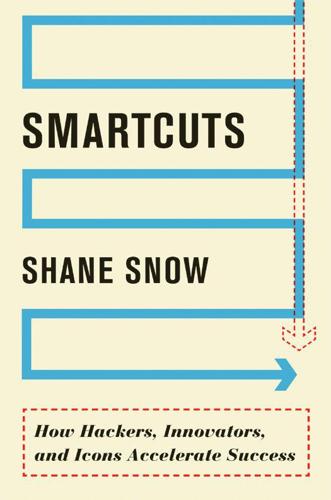
Smartcuts: How Hackers, Innovators, and Icons Accelerate Success
by
Shane Snow
Published 8 Sep 2014
That Could Value It at $15 Billion,” New York Times, January 13, 2011, http://dealbook.nytimes.com/2011/01/13/groupon-readies-for-an-i-p-o/. Groupon was two years old as of November 2010. (The song I listened to while preparing the previous seven citations: shanesnow.com/song1.) 4 “A serious assessment of the history of technology”: Ray Kurzweil, “The Law of Accelerating Returns,” March 7, 2001, http://www.kurzweilai.net/the-law-of-accelerating-returns (accessed February 15, 2014). A $1.7 million computer in 1990 could do 17 million “computations” per second. By 2003 a standard Dell could do 4 billion calculations per second and cost $1,600. Ritchie King, “The Rise of the Machines,” Popular Science, http://www.popsci.com/content/computing (accessed February 15, 2014). 5 Most large businesses stop growing: Eighty-seven percent of large businesses stop growing, according to researchers Matthew S.
…
Sure, there’s been inflation since Rockefeller, but there’s no disputing that we’ve decreased the time it takes innovative people to achieve dreams, get rich, and make an impact on the world—and this has largely been due to technology and communication. “A serious assessment of the history of technology shows that technological change is exponential,” writes the futurist and author Ray Kurzweil in his famous essay The Law of Accelerating Returns. “So we won’t experience 100 years of progress in the 21st century—it will be more like 20,000 years of progress (at today’s rate).” Here we come, Star Trek! At the same time, many industries remain decidedly stuck in the past. Most large businesses stop growing after a few years. Formal education, in many cases, is so slow or out-of-date that venture capitalists pay bright people to skip school and start Internet companies.
…
(“Magic”), 195 Johnson, Lyndon B., 18–19 Jordan, Michael, 61, 191 Kahn Academy, 155 The Karate Kid (film), 38, 48 Kattan, Chris, 36 Kennedy, John F., 18–19, 29, 175, 181 Kessler, Scott, 14 Kets de Vries, Manfred, 144 Khan, Sal, 155 Kim, Charlie, 45–46, 213n46 Kimmel, Jimmy, 141, 142, 229n141 King, Martin Luther, Jr., 181 Kluger, Avraham N., 68 Kodak (Eastman Kodak), 111 Koechley, Peter, 54–55, 72 Kozmo.com (Internet business), 58 Kramer, Steven J., 146 Kurzweil, Ray, 4 ladder to success changing direction can speed growth, 23–24 climbing rungs to the top, 17–20, 26, 29–30 collaborating/networking, 132 creativity has constraints, 164–66 hacking to “overnight” success, 20, 152–56 nontraditional paths, 30–31 “paying dues” as, 13, 18, 26–27, 36–37, 84 sideways thinking, 20–23 See also momentum; success Lady Gaga (Stefani Germanotta), 119–20, 134, 142, 153, 174–75 LA Gear (shoe company), 190–91 Lam, Brian (“Blam”), 162 Lanzolla, Gianvito, 117 lateral thinking (smartcuts) applied to problem-solving, 5–6 coining term, 95, 223n95 comparison to shortcuts, 7–8 disrupting status quo, 205n7 leadership capabilities and, 210n30 mentoring and, 43–45, 50–51 patterns of success, 10–13, 107–8 positive/negative, 6–8 principles summarized, 195–99 teaching children, 93–95, 188 teaching lateral thinking, 95 See also sideways thinking The Law of Accelerating Returns (Kurzweil), 4 Lean In (Sandberg), 44 Lehrer, Jonah, 98, 223n98 Leonard, Kelly, 56–57, 67 Lerer, Ken, 112, 116, 224n112 leverage/leveraging computers as a tool for, 81–86 importance of education, 86–88, 93–95 more “bang for the buck,” 11–12 picking right wave, 104–6 social networking for, 102–4 teaching conceptual understanding, 88–93 using platforms to create, 98–99 Lewis, Michael, 163 Lieberman, Marvin, 112, 115, 224n112 Lincoln, Abraham, 24–25, 26, 29 Lindsey, Clark, 172 “lollipop man,” 42–43 Los Angeles Times, 189 Lost (TV series), 132 Louis C.K.

Immortality, Inc.
by
Chip Walter
Published 7 Jan 2020
He knew all of this because he had written about it in his books. So now, as he sat perfectly erect with the other honorees in front of the podium, smiling up at the commander in chief that March morning, Kurzweil thought to himself, They are finally getting it. And of course they had to because the Law of Accelerating Returns made it so. * * * — THE LAW OF ACCELERATING RETURNS, or what Ray Kurzweil came to call LOAR, had begun to dawn on him as early as the 1980s, but wasn’t really codified until the publication of The Age of Spiritual Machines. It started out mostly as a practical matter; he needed a system for timing the rollout of all of those technologies he was continually creating.
…
Another surge came with the advance of intelligence, human consciousness, and the technologies that a symbol-creating, self-aware creature could conjure: words, language, writing, art, mathematics, and eventually software code, computers, robots, even genetic engineering—each gathering speed as they built on the foundations and developments before them. The more organized it all became, the more quickly it continued to organize. This made Moore’s law a subset of a much larger evolutionary vision: the Law of Accelerating Returns—LOAR. Kurzweil enthusiastically shared all of this thinking with the world. On stages or in conference rooms, he would reveal on great graphs how LOAR played out across the cosmos. It was an adult version of the same thinking he shared as the junk-collecting kid from Jackson Heights: I’m going to change the world!
…
Despite media reports of our collective demise, Kurzweil believed, the world was a better, safer, happier, and smarter place, mostly thanks to the advances that the keepers of science and innovation made possible. For Kurzweil, the smart thing was to let technology march ahead, Tom Swift-style, because that was where we were headed. It was all right there in LOAR (the Law of Accelerating Returns). Yes, one had to be vigilant and control the power of smart machines. He had been saying that for years. But no need to hit the panic button. Machines wouldn’t match human intelligence for another 10 years, and the Singularity itself wouldn’t arrive until 2045, a date with destiny that he planned to keep, when he celebrated his 97th birthday.

Exponential Organizations: Why New Organizations Are Ten Times Better, Faster, and Cheaper Than Yours (And What to Do About It)
by
Salim Ismail
and
Yuri van Geest
Published 17 Oct 2014
And now that we are information-enabling everything around us, the effects of the Kurzweil’s Law of Accelerating Returns are sure to be profound. What’s more, as these technologies intersect (e.g., using deep-learning AI algorithms to analyze cancer trials), the pace of innovation accelerates even further. Each intersection adds yet another multiplier to the equation. Archimedes once said, “Give me a lever long enough, and I’ll move the world.” Simply put, mankind has never had a bigger lever. Kurzweil’s Law of Accelerating Returns and Moore’s Law long ago broke from the confines of semiconductors and have utterly transformed human society over the last fifty years.
…
That steady, extraordinary, and seemingly impossible pace led futurist Ray Kurzweil, who has studied this phenomenon for thirty years, to make four signature observations: First, the doubling pattern identified by Gordon Moore in integrated circuits applies to any information technology. Kurzweil calls this the Law of Accelerating Returns (LOAR) and shows that doubling patterns in computation extend all the way back to 1900, far earlier than Moore’s original pronouncement. Second, the driver fueling this phenomenon is information. Once any domain, discipline, technology or industry becomes information-enabled and powered by information flows, its price/performance begins doubling approximately annually.
…
His discovery, immortalized as Moore’s Law, has seen the doubling of price/performance in computing continue uninterrupted for a half-century. As noted in the Introduction, Kurzweil took Moore’s Law several steps further, noting that every information-based paradigm operates in the same way, something he called the Law of Accelerating Returns (LOAR). There is a growing recognition that the pace of change formerly seen in computing is now mapping into other technologies with the same effect. For example, the first human genome was sequenced in 2000 at a cost of $2.7 billion. Because of the underlying accelerations in computing, sensors and new measurement techniques, the cost of DNA sequencing has been moving at five times the pace of Moore’s Law.

Bold: How to Go Big, Create Wealth and Impact the World
by
Peter H. Diamandis
and
Steven Kotler
Published 3 Feb 2015
Renne et al., “Time Scales of Critical Events Around the Cretaceous-Paleogene Boundary,” Science 339, no. 6120 (February 8, 2013): 684–687. 3 This has been documented all over the place, but if you want to see a really cool infographic comparing a typical smartphone to a 1985-era supercomputer, check out http://www.charliewhite.net/2013/09/smartphones-vs-supercomputers/. 4 Ray Kurzweil, “The Law of Accelerating Returns,” Kurzweil Accelerating Intelligence, March 7, 2001, http://www.kurzweilai.net/the-law-of-accelerating-returns. 5 Abundance was named a top five book of the year by both Fortune and Money. PART ONE: BOLD TECHNOLOGY Chapter One: Good-bye Linear Thinking . . . Hello, Exponential 1 Elizabeth Brayer, George Eastman: A Biography (Baltimore, MD: The Johns Hopkins University Press, 1996), 24–72.
…
v=wfnpVRiiwnM. 5 John Pavlus, “How Steve Sasson Invented The Digital Camera,” Fast Company, April 12, 2011, http://www.fastcodesign.com/1663611/how-steve-sasson-invented-the-digital-camera-video. 6 Steve Sasson, “Disruptive Innovation: The Story of the First Digital Camera,” Linda Hall Library Lectures, October 26, 2011. 7 Andrew Martin, “Negative Exposure for Kodak,” New York Times, October 20, 2011, http://www.nytimes.com/2011/10/21/business/kodaks-bet-on-its-printers-fails-to-quell-the-doubters.html?pagewanted=all. 8 Pavlus, “How Steve Sasson Invented The Digital Camera.” 9 Gordon E. Moore, “Cramming more components onto integrated circuits,” Electronics, April 19, 1965, 4. 10 Ray Kurzweil, “The Law of Accelerating Returns.” 11 Michael J. de la Merced, “Eastman Kodak Files for Bankruptcy,” New York Times, January 19, 2012, http://dealbook.nytimes.com/2012/01/19/eastman-kodak-files-for-bankruptcy/. 12 Chris Anderson, Free: How Today’s Smartest Businesses Profit by Giving Something for Nothing (New York: Hyperion, 2010), 2–3. 13 Elizabeth Palmero, “Google Invests Billions on Satellites to Expand Internet Access,” Scientific American, June 5, 2014. 14 Richard Foster and Sarah Kaplan, Creative Destruction: Why Companies That Are Built to Last Underperform the Market—And How to Successfully Transform Them (New York: Crown Business, 2001), 8. 15 Babson Olin School of Business Advertisement, Fast Company, April 2011, 121. 16 Foster and Kaplan, Creative Destruction. 17 Salim Ismail, AI, 2012. 18 Virginia Heffernan, “How We All Learned to Speak Instagram,” Wired, April 2013, http://www.wired.com/2013/04/instagram-2/. 19 Chenda Ngak, “Instagram for Android gets 1 million downloads in first day,” CBS News, April 4, 2012, http://www.cbsnews.com/news/instagram-for-android-gets-1-million-downloads-in-first-day/. 20 Joanna Stern, “Facebook Buys Instagram for $1 Billion,” ABC News, April 27, 2012, http://abcnews.go.com/blogs/technology/2012/04/facebook-buys-instagram-for-1-billion/. 21 Unless otherwise noted, all Ben Kauffman information comes from a series of AIs conducted in 2013. 22 Issie Lapowsky, “Quirky Lands $79 Million in Funding,” Inc., November 13, 2013, http://www.inc.com/issie-lapowsky/quirky-79-million-funding-connected-home.html. 23 AI conducted 2013. 24 Austin Carr, “Inside Airbnb’s Grand Hotel Plans,” Fast Company, April 2014. 25 Serena Saitto and Brad Stone, “Uber Sets Valuation Record of $17 Billion in New Funding,” Bloomberg.com, January 7, 2014.
…
pagewanted=all. 37 “IBM Watson’s Next Venture: Fueling New Era of Cognitive Apps Built in the Cloud by Developers,” IBM Press Release, November 14, 2013, http://www-03.ibm.com/press/us/en/pressrelease/42451.wss. 38 Nancy Dahlberg, “Modernizing Medicine, supercomputer Watson partner up,” Miami Herald, May 16, 2014. 39 AI with Daniel Cane, 2014. 40 Ray Kurzweil, “The Law of Accelerating Returns.” 41 Daniela Hernandez, “Meet the Man Google Hired to Make AI a Reality,” Wired, January 2014, http://www.wired.com/2014/01/geoffrey-hinton-deep-learning/. 42 AI with Geordie Rose, 2014. 43 See http://1qbit.com. 44 John McCarthy, Marvin Minsky, Nathaniel Rochester, and Claude E. Shannon, “A Proposal for the Dartmouth Summer Research Project on Artificial Intelligence,” AI Magazine, August 31, 1955, 12–14. 45 Jim Lewis, “Robots of Arabia,” Wired, Issue 13.11 (November 2005). 46 Garry Mathiason et al., “The Transformation of the Workplace Through Robotics, Artificial Intelligence, and Automation,” The Littler Report, February 2014, http://documents.jdsupra.com/d4936b1e-ca6c-4ce9-9e83-07906bfca22c.pdf. 47 See http://www.rethinkrobotics.com. 48 All Dan Barry quotes in this section come from an AI conducted 2013. 49 The Cambrian explosion was an evolutionary event beginning about 542 million years ago, during which most of the major animal phyla appeared. 50 See “Amazon Prime Air,” Amazon.com, http://www.amazon.com/b?
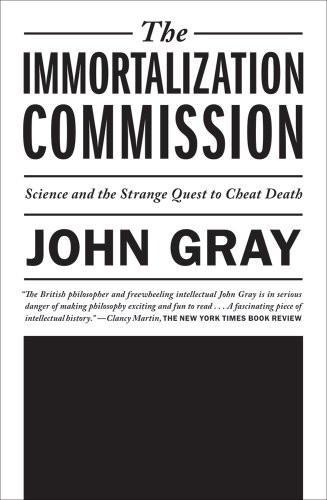
The Immortalization Commission: Science and the Strange Quest to Cheat Death
by
John Gray
Published 11 Apr 2011
A contemporary example is the American visionary Ray Kurzweil. In The Singularity Is Near: When Humans Transcend Biology, Kurzweil suggests that a world-transforming increase in the growth of knowledge is imminent. Human ingenuity has created machines with exponentially increasing capacity to process information. Given the law of accelerating returns it cannot be long before artificial intelligence overtakes its human inventors. At that point the Singularity will be such that: technology appears to be expanding at infinite speed. Of course, from a mathematical perspective, there is no discontinuity, no rupture, and the growth rates remain finite, though extraordinarily large.
…
In fact, other people (such as your romantic partner) will be able to select a different body for you than you might select for yourself (and vice versa).’ Post-humans can be whatever they want to be – for ever. Like Ettinger’s and Harrington’s, Kurzweil’s programme reaches well beyond immortality. The Singularity is an eschatological event, ending the world as it has always been: The law of accelerating returns will continue until nonbiological intelligence comes close to ‘saturating’ the matter and energy in our vicinity of the universe with our human-machine intelligence … Ultimately, the entire universe will become saturated with our intelligence. This is the destiny of the universe. Enlarged by conscious machines, the human mind will swallow the cosmos.
…
p. 213 Drunk on the emptied wine-cup of the earth …and seconds passed in heavy honeyed drops: George Faludy, Selected Poems of George Faludy 1933–80, ed. and trans. Robin Skelton, Athens: University of Georgia Press, 1985, 98. p. 214 Transcend: Nine Steps to Living Well Forever: Ray Kurzweil and Terry Grossman, MD, Transcend: Nine Steps to Living Well Forever, New York: Rodale Books, 2009. p. 215 The law of accelerating returns …This is the destiny of the universe: Ray Kurzweil, The Singularity Is Near: When Humans Transcend Biology, New York: Viking, 2005, 24–9. p. 217 the universe will become sublimely intelligent: Ibid., 390. p. 217 A common view is that science has consistently been correcting …until the entire universe is at our finger-tips: Ibid., 487.
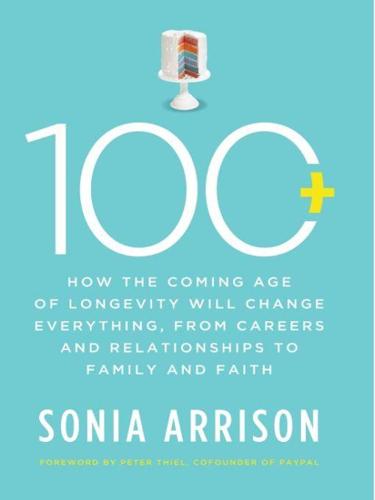
100 Plus: How the Coming Age of Longevity Will Change Everything, From Careers and Relationships to Family And
by
Sonia Arrison
Published 22 Aug 2011
A manipulation of matter at the level of tiny individual atoms and molecules, nanotechnology is an information technology because, as futurist and inventor Ray Kurzweil says, it is the business of “applying information processes to create intricate new devices at the molecular level.”57 Because these technologies tend to progress exponentially, he predicts that solar power will scale up to produce all the energy needs of the earth’s people in twenty years. He often reminds audiences that “there is 10,000 times more sunlight than we need to meet 100 percent of our energy needs, and the technology needed for collecting and storing it is about to emerge as the field of solar energy is going to advance exponentially in accordance with the Law of Accelerating Returns. That law yields a doubling of price performance in information technologies every year.”58 Whether or not we believe Kurzweil’s projections, it is true that nano-engineered fuel cells already exist and solar panels are continually becoming smaller and more efficient. For instance, a company called Nanosolar has developed technology that enables the production of one-hundred-times-thinner solar cells, with much greater efficiency.
…
“AIDS drugs were about $30,000 per patient per year 15 years ago, and they didn’t work very well,” Kurzweil points out. “Now they actually work pretty well, and they’re $100 per patient per year.”48 Why is technology growing at an exponential rate? Kurzweil explains it through a theorem he calls the “Law of Accelerating Returns.” Technology can move faster and faster, he explains, because “it builds on the fruits of the last stage.”49 Not only that, but there is also a positive feedback loop because “the more effective a particular evolutionary process becomes—for example, the higher the capacity and cost-effectiveness that computation attains—the greater the amount of resources that are deployed toward the further progress of that process.”50 Put simply, when humans see success, they tend to want to support it even more.
…
King, Larry Klaus, Frank Klein, Bruce Klug, Aaron Knowledge Kohn, Livia Kope, Mike Kotelko, Olga Kristof, Nicholas D. Krueger, Alan Krupp, Fred Kula, Witold Kulkarni, Deepa Kurzweil, Ray Labor Department Labor force. See also Work Lactic acid Laderman, Gary Lamarckism LaMonica, Martin Landfills Lane, Robert W. Law of Accelerating Returns LCA. See Leber congenital amaurosis Leachate Leadership Leber congenital amaurosis (LCA) Lederberg, Dr. Joshua Leisure Leukemia Liberty University Life cycle hypothesis Life expectancy countries ranked for(table) disparities in growth for men and women and number of evenings/weekends (fig.)

Scary Smart: The Future of Artificial Intelligence and How You Can Save Our World
by
Mo Gawdat
Published 29 Sep 2021
The closest we got to that was the 2020/21 COVID-19 pandemic and the economic slowdown that followed. Even then, as the general public suffered, the global stock markets soared and more investment poured into more AI. ‘There was nothing to prevent the first inevitable. As a matter of fact, there was a well-known law helping it along. You may have heard of it. It’s known as the law of accelerating returns.’ You can probably get a sense of where this version of the story is heading. But to get a deeper understanding of what might have led us there, I am going to leave our future selves sitting by the fireside for a while and come back to the present day. The Second Inevitable: AI Will Outsmart Humans Those of us who don’t possess psychic abilities to predict the future rely on the second best superpower in existence – mathematics.
…
All of them pointed to a clear upwards trajectory that has perhaps been summed up best by the work of Ray Kurzweil, the world-renowned inventor, futurist and author of several definitive books on the topic of AI, such as his international bestseller The Singularity. In his 1999 book, The Age of Spiritual Machines, he coined the term ‘The Law of Accelerating Returns’, which explained that the rate of change in a wide variety of evolutionary systems (including, but not limited to, the growth in technology) tends to increase exponentially. In Ray’s view of the world, this is not just an exclusive trend for computers, it is in fact the rate at which all innovation happens.
…
One way is to celebrate that we saved civilization the forty-two years it would have taken for the classical computers we keep advancing to reach that milestone following Moore’s law. The other way is to recognize that quantum computing itself is literally in its infancy, and that if the same laws of accelerating returns apply to them, then that massive jump of performance will itself double and multiply very rapidly. How rapidly? It is widely believed that the rate at which our tech will advance when powered by quantum computers will be double as exponential as what we have seen with Moore’s law. This staggering new rate of acceleration is known as Neven’s law, after Hartmut Neven, founder and director of Google’s Quantum Artificial Intelligence lab.

Rule of the Robots: How Artificial Intelligence Will Transform Everything
by
Martin Ford
Published 13 Sep 2021
Darrell Etherington, “Waymo has now driven 10 billion autonomous miles in simulation,” TechCrunch, July 10, 2019, techcrunch.com/2019/07/10/waymo-has-now-driven-10-billion-autonomous-miles-in-simulation/. 62. Waymo website, accessed May 20, 2020, waymo.com/. 63. Ray Kurzweil, “The Law of Accelerating Returns,” Kurzweil Library Blog, March 7, 2001, www.kurzweilai.net/the-law-of-accelerating-returns. 64. Tyler Cowen, The Great Stagnation: How America Ate All the Low-Hanging Fruit of Modern History, Got Sick, and Will (Eventually) Feel Better, Dutton, 2011. 65. Robert J. Gordon, The Rise and Fall of American Growth: The U.S. Standard of Living Since the Civil War, Princeton University Press, 2016. 66.
…
BLASTING OFF THE INNOVATION PLATEAU: SCIENTIFIC AND MEDICAL RESEARCH Among those who might be described as “technoptimists,” it is taken as a given that we live in an age of startling technological acceleration. The pace of innovation, we are told, is unprecedented and exponential. The most enthusiastic accelerationists—often acolytes of Ray Kurzweil, who codified the idea in his “Law of Accelerating Returns”—are confident that in the next hundred years, we will experience, by historical standards, the equivalent of something “more like 20,000 years of progress.”63 Closer scrutiny, however, reveals that while the acceleration has been real, this extraordinary progress has been confined almost exclusively to the information and communications technology arena.
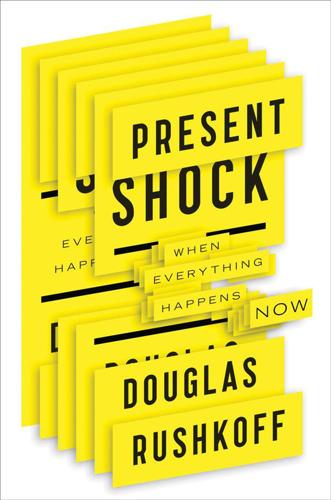
Present Shock: When Everything Happens Now
by
Douglas Rushkoff
Published 21 Mar 2013
Whatever it is that makes us uniquely human, such as our genome or cognitive functioning, will have been mapped and virtualized by computers in around 2050, anyway. We may as well stand aside and let it rip. Thanks to Kurzweil’s Law of Accelerating Returns, technology develops exponentially and has been doing so since time began. But it is only getting really interesting now that we have rounded the bend of the exponential curve to a nearly vertical and infinite shot upward. The antithesis of the Law of Diminishing Returns, the Law of Accelerating Returns holds that technology will overtake humanity and nature, no matter what. In his numerous books, talks, and television appearances, Kurzweil remains unswerving in his conviction that humanity was just a temporary step in technology’s inevitable development.
…
See also media JPMorgan Chase, 174 Kairos time, 112–20, 236, 259 Kaprow, Allan, 60 Keen, Andrew, 52 Kelly, Kevin, 256–57 Kennedy, John F., 29 Kirn, Walter, 234 kleptomania, 166 Korzybski, Alfred, 103, 137–38, 139 Kurzweil, Ray, 254–56 Kutcher, Ashton, 119 Langley, John, 35 Law of Accelerating Returns, Kurzweil’s, 255–56 Law of Diminishing Returns, 255 Law and Order (TV show), 20, 32 Le Guin, Ursula K., 13 leading, digiphrenia and, 93–109 Lennon, John, 29 Leno, Jay, 55 Lethem, Jonathan, 34 leverage: digiphrenia and, 71–72; fractalnoia and, 206, 229; overwinding and, 135, 136, 137, 139, 163, 165, 175, 176, 177, 178, 184, 185, 186, 188, 189, 190; storytelling and, 20 Licklider, J.C.R., 4 LifeWaves, 107 Lilla, Mark, 53 Lincoln, Abraham, 82 Linnaeus, Carolus, 90 Lippman, Walter, 45 local economic transfer systems (LETS), 149 long now, overwinding and, 140–49, 193, 194 Lost (TV show), 32, 34, 39, 199 Luntz, Frank, 47 machines: digiphrenia and, 93, 95, 98–99; event-based, 98–99; fractalnoia and, 224, 225, 230, 231; humans as, 95; needs of, 81; new “now” and, 4–5; off-loading of time intensive tasks to, 93.
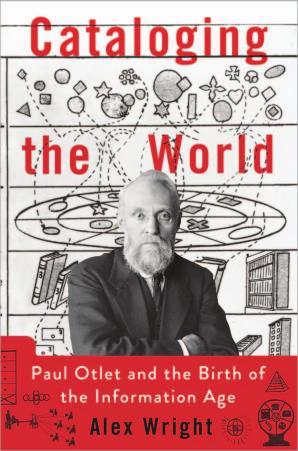
Cataloging the World: Paul Otlet and the Birth of the Information Age
by
Alex Wright
Published 6 Jun 2014
America and the Return of Nazi Contraband: The Recovery of Europe’s Cultural Treasures. Cambridge: Cambridge University Press, 2006. “Kurzbiographien/Dictionnaire Biographique.” Institut d’Histoire du Temps Présent—IHTP. Accessed June 28, 2013. http://www.ihtp.cnrs.fr/prefets/ kurzbiographien_cv.html. Kurzweil, Ray. “The Law of Accelerating Returns,” March 7, 2001. http://www .kurzweilai.net/the-law-of-accelerating-returns. Laaff, Meike. “Internet Visionary Paul Otlet: Networked Knowledge, Decades before Google.” Spiegel Online, July 22, 2011. http://www.spiegel.de/international/world/internet-visionary-paul-otlet-networked-knowledge-decades-before-google-a-775951.html.
…
Kelly, “We Are the Web.” 22 . Lévy, Collective Intelligence, 13–15. 23. “Internet 2012 in Numbers.” 24. Gelernter, “The End of the Web, Search, and Computer as We Know It.” 25. Rayward, “Visions of Xanadu.” 26. Otlet, Traité de Documentation, 431. 27. Hillis, “The Big Picture.” 28. Kurzweil, “Law of Accelerating Returns.” 29. Shirky, Cognitive Surplus. Conclusion 1. 2. 3. 4. 5. 6. 7. 8. Echikson, personal interview. Dyson, “Turing’s Cathedral.” Morris, “Henry James and an Eccentric Sculptor’s Fantasies.” Mumford, introduction to Geddes and Tyrwhitt, Patrick Geddes in India, 9. Brook, “Heirs Apparent,” 17.
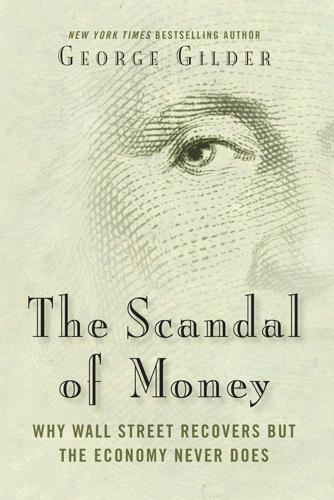
The Scandal of Money
by
George Gilder
Published 23 Feb 2016
All expanding businesses and industries follow a learning curve that ordains a 20 to 30 percent decrease in costs with every doubling of total units sold. Classical learning curves are MOORE’S LAW in SILICON VALLEY and METCALFE’S LAW in networking. Raymond Kurzweil generalized the concept as a “law of accelerating returns.” Moore’s Law: Cost-effectiveness in the computer industry doubles every two years. This pace corresponds closely to a faster pace in the number of transistors produced, signifying a learning curve. Formulated by Intel founder Gordon Moore and inspired by Caltech professor Carver Mead’s research, Moore’s Law was originally based on the biennial doubling of the density of transistors on a silicon chip.
…
But both complex systems and entropy represent surprising deformations of order. 2.“Costs and the Experience Curve, Why Costs Go Down Forever,” chapter 2 of Bruce D. Henderson, The Logic of Business Strategy (Cambridge, MA: Ballinger Publishing, 1984), 47ff. 3.“The Six Epochs” and “The Law of Accelerating Returns,” chapters 1 and 2 of Ray Kurzweil, The Singularity Is Near (New York, NY: Viking, 2005), 7–34. 4.William D. Nordhaus, “Do Real-Output and Real-Wage Measures Capture Reality? The History of Lighting Suggests Not,” Cowles Foundation for Research in Economics at Yale University, 1998. This epochal paper was delivered first to the National Bureau of Economic Research in 1993.
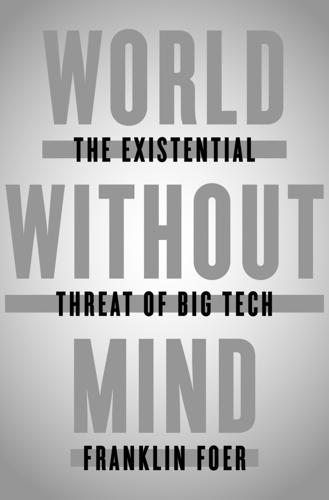
World Without Mind: The Existential Threat of Big Tech
by
Franklin Foer
Published 31 Aug 2017
In fact, he’s loaded everything we know about the history of human technology onto his computer and run the numbers. Technological progress, he has concluded, isn’t a matter of linear growth; it’s a never-ending exponential explosion. “Each epoch of evolution has progressed more rapidly by building on the products of the previous stage,” he writes. Kurzweil has named this observation the Law of Accelerating Returns. And in his telling, humanity is about to place a lead foot on its technological accelerator—we’re on the threshold of massive leaps in genetics, nanotechnology, and robotics. These developments will allow us to finally shed our “frail” and “limited” human bodies and brains, what he calls our “version 1.0 biological bodies.”
…
Because DeepMind feared the dangers of a single company possessing such powerful algorithms, it insisted that Google never permit its work to be militarized or sold to intelligence services. How deeply does Google believe in the singularity? Hardly everyone in the company agrees with Kurzweil’s vision. One of the company’s most accomplished engineers, Peter Norvig, has argued against the Law of Accelerating Returns. And Larry Page has never publicly commented on Kurzweil. Yet, there’s an undeniable pattern. In 2008 Google helped bankroll the creation of Singularity University, housed on a NASA campus in Silicon Valley—a ten-week “graduate” program cofounded by Kurzweil to promote his ideas. Google has donated millions so that students can attend SU on a free ride.
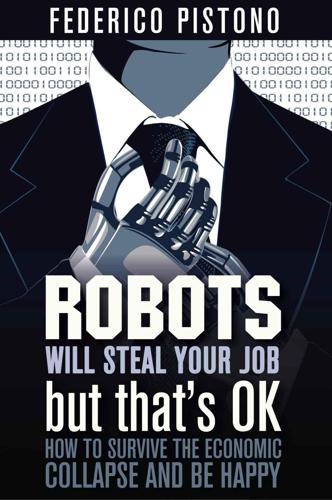
Robots Will Steal Your Job, But That's OK: How to Survive the Economic Collapse and Be Happy
by
Pistono, Federico
Published 14 Oct 2012
http://en.wikipedia.org/wiki/File:Wheat_Chessboard_with_line.svg 25 Cramming more components onto integrated circuits, Gordon E. Moore, 1965. Electronics Magazine. p. 4. http://download.intel.com/museum/Moores_Law/Articles-Press_Releases/Gordon_Moore_1965_Article.pdf 26 The Law of Accelerating Returns March 7, Ray Kurzweil, 2001. http://www.kurzweilai.net/the-law-of-accelerating-returns 27 The Chinese room is a thought experiment presented by John Searle. It supposes that there is a program that gives a computer the ability to carry on an intelligent conversation in written Chinese. If the program is given to someone who speaks only English to execute the instructions of the program by hand, then in theory, the English speaker would also be able to carry on a conversation in written Chinese.

Thinking Machines: The Inside Story of Artificial Intelligence and Our Race to Build the Future
by
Luke Dormehl
Published 10 Aug 2016
Billions Fewer than We Thought’, Guardian, 28 February 2012: theguardian.com/science/blog/2012/feb/28/how-many-neurons-human-brain 10 Stoller-Conrad, Jessica, ‘Controlling a Robotic Arm with a Patient’s Intentions’, Caltech, 21 May 2015: caltech.edu/news/controlling-robotic-arm-patients-intentions-46786 11 Kever, Jeannie, ‘Researchers Build Brain-Machine Interface to Control Prosthetic Hand’, University of Houston, 31 March 2015: uh.edu/news-events/stories/2015/March/0331BionicHand.php 12 Kurzweil, Ray, ‘The Law of Accelerating Returns’, 7 March 2001: kurzweilai.net/the-law-of-accelerating-returns 13 Linden, David, ‘The Singularity Is Far: A Neuroscientist’s View’, BoingBoing, 14 July 2011: http://boingboing.net/2011/07/14/far.html 14 http://2045.com/press/ 15 Hayworth, Ken, ‘Killed by Bad Philosophy’, Brain Preservation Foundation, January 2010: brainpreservation.org/content-2/killed-bad-philosophy/ Chapter 8: The Future (Risks) of Thinking Machines 1 Cook, James, ‘Elon Musk: Robots Could Start Killing Us All Within 5 Years’, Business Insider, 17 November 2014: uk.businessinsider.com/elon-musk-killer-robots-will-be-here-within-five-years-2014–11 2 Hern, Alex, ‘Elon Musk Says He Invested in DeepMind Over “Terminator” Fears’, Guardian, 18 June 2014: theguardian.com/technology/2014/jun/18/elon-musk-deepmind-ai-tesla-motors 3 Hawking, Stephen et al., ‘Stephen Hawking: “Transcendence Looks at the Implications of Artificial Intelligence … ”’, Independent, 1 May 2014: independent.co.uk/news/science/stephen-hawking-transcendence-looks-at-the-implications-of-artificial-intelligence-but-are-we-taking-9313474.html 4 Hill, Doug, ‘The Eccentric Genius Whose Time May Have Finally Come (Again)’, Atlantic, 11 June 2014: theatlantic.com/technology/archive/2014/06/norbert-wiener-the-eccentric-genius-whose-time-may-have-finally-come-again/372607/ 5 Good, I.
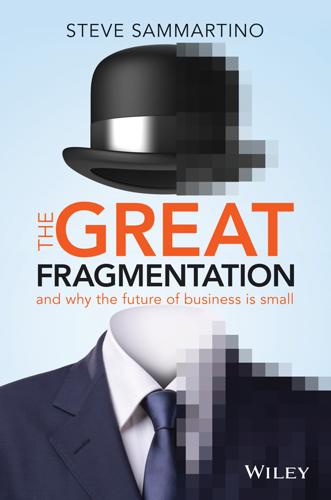
The Great Fragmentation: And Why the Future of All Business Is Small
by
Steve Sammartino
Published 25 Jun 2014
The principle applies to processing speed, memory capacity, pixels in digital cameras, GPS devices, network capacity, solar panels … and an extensive list of other technology device inputs. And even if we look at the pre-digital era it also remains true for vacuum tube circuit computers. They all follow the law of accelerating returns of technology. The rate of improvement we see in all of these technologies has been exponential and a key force in the dramatic democratisation of the modern economy. Many previously unattainable technological goods and services — computing and communications devices only affordable to the largest organisations — are now at disposable price points, often even free.
…
It’s also the prices of the functional pieces of technology inside the devices. The prices of entire gadgets are rapidly falling. These price declines are also assisted by production-line improvements; that is, globalisation — the opening up of low-cost labour markets in the production of technology products. It’s staggering to observe the law of accelerating returns when we look at it in real terms; in other words, the real things we use every day, not just the techie bits that live inside them. Let’s consider the following examples as reminders of how far we’ve come. Television. A 42-inch flat-screen LCD television now costs 10 per cent of what it did 10 years ago.
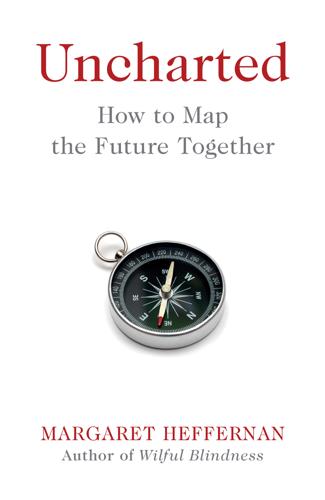
Uncharted: How to Map the Future
by
Margaret Heffernan
Published 20 Feb 2020
But Kurzweil goes further, imagining our brains uploaded into computers (or computers becoming embedded inside our brains), at which point distinctions between machine and human become moot. By 2045, when Kurzweil will be ninety-seven, he believes that technology will surpass human intelligence and be capable of solving every problem. His so-called Law of Accelerating Returns argues that because human evolution and technological advances are exponential, we will finally be able to transcend physical and mental limitations to become pure intelligence. What seems to thrill him most about this vision is not so much the prospect of immortality – though he is deeply invested in that – but the opportunity to cast physical biology aside in exchange for engineering perfection.
…
Stephen, 205 healthcare, industrialisation of, 124–38 Heraghty, Oisin, 144 hereditary conditions, 89–90, 99 Higgins, Terrence, 257 Higgs boson, 216 Higgs, Peter, 83, 207 hippocampus, 43 historic record, 71 historical data, 5 HIV, 259, 268, 274 Hodgkinson, David, 50 Hodgkinson, James, 48–50 Hodgkinson, Joan, 50 Hollow, 180, 194 Holmes, Oliver Wendell, 97 homophobia, 257 horoscopes, 2, 88 Hosking, Rebecca, 109–13 House of Fraser, 117 Howard, Michael, 59 Howe, Sophie, 309–13, 317 HSBC, 253 HTLV-3, 259 human complexity, 7 Human Genome Project, 82, 88, 99, 218 Huntington’s disease, 89 Hurricane Katrina, 305 Hurt Heart, 190 hyperbolic narrative, 245–6 IARPA, 36–7 Iberian Anarchist Federation (FAI), 225 Ibsen, Henrik, 15, 177, 179–80, 193, 198 Icarus, 166 IESE, 230 incarceration, 97 independent assortment, 83 Index Number Institute, 18 individualism, 157–8 inductive approach, 21 Industrial Revolution, 60 IndyRef, 39 The Information Mine (TIM), 210 ING, 255 injustice, 103, 109, 112 innovation, 82, 84, 116–17, 121, 123, 158, 164, 170, 178, 200, 223–5, 247, 297 Intelligence Advanced Research Projects Activity, see IARPA Internet of Things, 118 interpersonal medicine, 136 intolerance, 2 in vitro fertilisation, see IVF iPhone, 4, 246 IQ, 97 Iraq War, 3 Ireland University, 146 It’s Impossible to Learn to Plow by Reading Books, 196 IVF, 98, 222–3 Jackson, Glenda, 275–6 Jobs, Steve, 199 ‘John and Mary’ anecdote, 237–45, 270, 295 John Lewis Partnership, 117–20 Johnson & Johnson, 233 Johnson, Lyndon B., 53–4 Johnston, Clay, 129, 131, 136–7 Jones, Katherine, 132, 133 Joyce, James, 197, 198 ‘Julia, Mario, Johanna and Luca’ anecdote, 65–9, 72, 79, 94, 107 Jung, Carl, 73 ‘just in case’ vaccines, 298–9, 301 just-in-time management systems, 299 Kahane, Adam, 165–7, 170, 322 Kallasvuo, Olli-Pekka, 247 Kavanagh, Patrick, 182–3, 192, 198 Kenny, Enda, 140–1, 143 Key Performance Indicators (KPIs), 220 Keynes, John Maynard, 21, 25–6, 97 King Lear, 195, 275–6 Koch, Michael, 160, 161 Koch, Robert, 15 Korea, 4 Korean War, 53 KPIs (Key Performance Indicators), 220 Kramer, Larry, 258, 259–60, 261 Krugman, Paul, 24, 28 Kudlow, Larry, 28 Kurzweil, Ray, 283–6 La Boheme, 274 La Traviata, 274 labour disputes, 4 labour market, 32 Labour Party, 270 Laffoy, Mary, 142, 146 Lame Duck, 166 Large Hadron Collider (LHC), 207, 209, 211, 212–14 Lassa, 298, 302 Last Four Songs, 274 Late Style, 277, 278 Law of Accelerating Returns, 284 Le Corbusier, 226 Leadership Paradox, 157 Lee, Ann, 293, 294 Leeds Wellbeing Warriors, 118 left-handedness, 74 Legionnaire’s disease, 58 legitimacy, 26, 141, 145, 205, 222, 231, 234, 316–18 Lehman Brothers, 248 Leigh, Mike, 180, 185, 192–3 Leipziger Montagsdemonstrationen, 56 Lenz, Fritz, 97 life expectancy, 282, 286, 311 Lindquist, Ulla-Carin, 275 Linklater, Richard, 183, 196 Llewellyn-Smith, Christopher, 207–9, 211, 215, 217, 231, 303 Lloyds Banking Group, 233 London, navigation around, 42–3 London and Cambridge Economic Service, 21 London College of Fashion, 67 Long, Iris, 261–2, 269 longevity, 89, 205, 216, 222, 224, 231, 252, 280, 286 loyalty, 47–8, 121, 270 Lozano, Francisco de Paula del Villary, 224, 229 ‘Lucy’ anecdote, 287–8 Lundgren, Britt, 114 Macbeth, 31 McCarthy, Mark, 95 McChrystal, Gen.

Future Crimes: Everything Is Connected, Everyone Is Vulnerable and What We Can Do About It
by
Marc Goodman
Published 24 Feb 2015
/Feb. 2013. 6 Incredibly, it literally: Cliff Saran, “Apollo 11: The Computers That Put Man on the Moon,” Computer Weekly, July 13, 2009. 7 The modern smart phone: Peter Diamandis, “Abundance Is Our Future.” TED Talk, Feb. 2012. 8 As a result of mathematical repercussions: Ray Kurzweil, “The Law of Accelerating Returns,” Kurzweil Accelerating Intelligence, March 7, 2001. 9 “law of accelerating returns”: Ray Kurzweil, The Singularity Is Near: When Humans Transcend Biology (New York: Penguin, 2006). 10 Early criminal entrepreneurs: Evan Andrews, “6 Daring Train Robberies,” History.com, Oct. 21, 2013. 11 Their carefully planned heist: Brett Leppard, “The Great Train Robbery: How It Happened,” Mirror, Feb. 28, 2013. 12 The incident kept the PlayStation: Keith Stuart and Charles Arthur, “PlayStation Network Hack: Why It Took Sony Seven Days to Tell the World,” Guardian, Feb. 5, 2014; “Credit Card Alert as Hackers Target 77 Million PlayStation Users,” Mail Online, Feb. 5, 2014. 13 In the end, financial analysts: J.
…
As a result of mathematical repercussions of exponentials and Moore’s law, “we won’t experience a hundred years of progress in the twenty-first century; it will be more like twenty thousand years of progress (at today’s rate).” Given the exponential pace of change in computer processing power and sophistication, it should be obvious that in the very near future computers will become profoundly capable. Ray Kurzweil describes the constant doubling of computing’s price performance and power in his “law of accelerating returns.” He predicts a point in time where a technological singularity will take place—that is, a moment in time where computing progress is so rapid it outpaces mankind’s ability to comprehend it and machine intelligence will exceed human intelligence. Whether or not that day eventually comes (Kurzweil predicts the year to be 2045), one thing is clear: computing power is growing exponentially, and our ability to understand the global information grid and map its vast interconnections is waning.
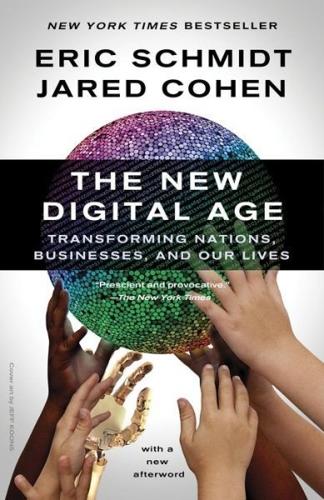
The New Digital Age: Transforming Nations, Businesses, and Our Lives
by
Eric Schmidt
and
Jared Cohen
Published 22 Apr 2013
Conclusion As we look into the future—its promises and its challenges—we are facing a brave new world, the most fast-paced and exciting period in human history. We’ll experience more change at a quicker rate than any previous generation, and this change, driven in part by the devices in our own hands, will be more personal and participatory than we can even imagine. In 1999, the futurist Ray Kurzweil proposed a new “Law of Accelerating Returns” in his seminal book The Age of Spiritual Machines: When Computers Exceed Human Intelligence. “Technology,” he wrote, “is the continuation of evolution by other means, and is itself an evolutionary process.” Evolution builds on its own increasing order, leading to exponential growth and accelerated returns over time.
…
Hormuud https encryption protocols Huawei human rights, 1.1, 3.1 humiliation Hussein, Saddam, itr.1, 7.1, 7.2, 7.3, 7.4 Hutus Identity Cards Act identity theft identity-theft protection, 2.1, 2.2 IEDs (improvised explosive devices), 5.1, 6.1 IEEE Spectrum, 107n income inequality, 1.1, 4.1 India, 2.1, 2.2, 3.1 individuals, transfer of power to Indonesia infiltration information blackouts of exchange of free movement of see also specific information technologies Information and Communications Technologies Authority Information Awareness Office information-technology (IT) security experts infrastructure, 2.1, 7.1 Innocence of Muslims (video), 4.1, 6.1 innovation Institute of Electrical and Electronics Engineers, n insurance, for online reputation integrated clothing machine intellectual property, 2.1, 3.1 intelligence intelligent pills internally displaced persons (IDP), 7.1, 7.2 International Criminal Court, 6.1, 7.1, 7.2 internationalized domain names (IDN) International Telecommunications Union Internet, 2.1, 6.1, 6.2, 6.3, 6.4 Balkanization of as becoming cheaper and changing understanding of life impact of as network of networks Internet asylum seekers Internet Corporation for Assigned Names and Numbers (ICANN) internet protocol (IP) activity logs internet protocol (IP) address, 3.1, 3.2, 6.1 Internet service provider (ISP), 3.1, 3.2, 6.1, 7.1 Iran, 2.1, 2.2, 3.1, 3.2, 3.3, 3.4, 3.5, 3.6, 4.1, 4.2, 5.1, 6.1, 6.2, 6.3, 7.1 cyber warfare on “halal Internet” in Iraq, itr.1, 3.1, 4.1, 6.1, 6.2 reconstruction of, 7.1, 7.2 Ireland iRobot Islam Israel, 3.1, 3.2, 3.3, 3.4, 6.1, 6.2, 6.3 iTunes Japan, 3.1, 6.1n, 246 earthquake in Jasmine Revolution JavaOne Conference Jebali, Hamadi Jibril, Mahmoud Jim’ale, Ali Ahmed Nur Join the Club: How Peer Pressure Can Transform the World (Rosenberg), 4.1 Joint Tactical Networking Center Joint Tactical Radio System Julius Caesar justice system Kabul Kagame, Paul, 7.1, 7.2 Kansas State University Karzai, Hamid Kashgari, Hamza Kaspersky Lab Kenya, 3.1, 7.1, 7.2 Khan Academy Khartoum Khodorkovsky, Mikhail Khomeini, Ayatollah Kickstarter kidnapping, 2.1, 5.1 virtual Kinect Kissinger, Henry, 4.1, 4.2 Kiva, 7.1, 7.2, 7.3 Klein, Naomi, n Kony 2012, 7.1 Koran Koryolink “kosher Internet,” 187 Kosovo Kurds, 3.1, 3.2, 4.1 Kurzweil, Ray Kyrgyzstan Laârayedh, Ali Lagos language translation, 1.1, 4.1, 4.2 laptops Latin America, 3.1, 4.1, 4.2, 5.1 law enforcement Law of Accelerating Returns Lebanon, 5.1, 7.1, 7.2 Lee Hsien Loong legal options, coping strategies for privacy and security concerns legal prosecution Lenin, Vladimir Levitt, Steven D. Libya, 4.1, 4.2, 4.3, 6.1, 7.1, 7.2 life expectancy Lindhout, Amanda LinkedIn Link Egypt litigation lobbying groups Lockhart, Clare, n Lockheed Martin Lord’s Resistance Army loyalties, 2.1, 2.2 LulzSec Maasai, 1.1, nts.1 McAfee, John McChrystal, Stanley Malaysia, 3.1, 4.1, 6.1n Mali, 2.1, 7.1 malware state-initiated, 2.1, 2.2 Mandela, Nelson “man-in-the-middle” attacks Manning, Bradley Mao Zedong MasterCard, 5.1, 5.2 Mauritania, 3.1, 3.2 Mbeki, Thabo MCI Mechanical Turk media: disaggregated mainstream media cycles medicine Megaupload Mehr, 95 memory prosthetics Mexico, 2.1, 5.1, 6.1 microblogs microphones Microsoft, 1.1, 3.1, 3.2 Middle East military-industrial complex Milošević, Slobodan mine-resistant, ambush-protected (MRAP) vehicles Ministry of Posts and Telecommunications, North Korea minority groups, 6.1, con.1 Minority Report (film), 1.1 misinformation, 3.1, 3.2, 6.1 MIT Media Lab Mitnick, Kevin, n Mobile Giving Foundation “mobile health” revolution mobile money credits mobile phones, 1.1, 4.1, 5.1, 5.2, 5.3, 7.1, 7.2, con.1 banned in Iraq in Congo education and health and see also smart phones Money for Good report, nts.1 Mongolia Monopoly (film), 4.1 monuments Moore’s Law, itr.1, con.1 moral sense Moro Islamic Liberation Front Morsi, Mohamed Motorola MTC-Vodafone Mubarak, Hosni, 3.1, 3.2, 4.1, 4.2, 4.3, 7.1 Mugabe, Robert multilayer backup systems Mumbai attacks Mundie, Craig, 3.1, 3.2, 3.3 Muslim Brotherhood, 4.1, 4.2, 4.3 Mutua, Anthony myths names, 2.1, nts.1 Napster narco-terrorists, 5.1, 5.2 nasal implants Natanz nuclear enrichment facility National Security Agency (NSA) National Security Law National Transitional Council (NTC) NATO, 3.1, 4.1, 5.1, 6.1, 6.2, 6.3 Navalny, Alexei Navy SEAL Team Six, 5.1, 5.2 Nawaz, Maajid near-permanent data storage Neda video, 6.1, 6.2 Netflix Netherlands net neutrality Nevada New York City subway, n New York Times, 33, 3.1, 3.2, 4.1, 5.1, 7.1 New York Times Magazine, 197 NGO Ratings Nigeria Nightmare Nixon, Richard noise Nokia Siemens Networks (NSN) nongovernmental organizations (NGOs), 1.1, 2.1, 2.2, 3.1, 6.1, 7.1, 7.2, 7.3, 7.4, 7.5, 7.6, 7.7, con.1, nts.1 nonprofits non-state actors, coping strategies for privacy and security concerns Noor Group, n North Korea, 2.1, 3.1, 3.2, 3.3 Northrop Grumman Norway Nuclear Nonproliferation Treaty Obama, Barack, 3.1, 3.2, 6.1 unauthorized leaks and official profiles Ohio State University Olympic Games (attack code name) One World Trust online cadastral systems online reputations active management of black markets in insurance for open networks open-source movement open-source software, 6.1, 7.1 Operation Avenge Assange optimism options Orascom, 3.1, 3.2 Otpor Ottoman empire, 6.1, 7.1 outsourcing oversights OxOmar PackBot Pakistan, 3.1, 3.2, 4.1, 5.1, 5.2, 5.3, 5.4, 6.1 Palestinian Islamic Jihad paparazzi Paraguay parents Parrot passwords, 2.1, 2.2 patents PayPal, 5.1, 5.2 peer-to-peer (P2P) networking, 2.1, 4.1, nts.1 Philanthropedia philanthropic organizations Philippines, 3.1, 4.1 photographs photonics photos physical infrastructure Picciolini, Christian Pinker, Steven piracy (online) Pirate Bay, 2.1, 3.1 pirates Plataforma México Poland, 4.1, 7.1 police police brutality police cars popular uprisings pornography postcrisis societies, 3.1, 7.1, 7.2, 7.3, 7.4, 7.5, 7.6, 7.7, 7.8, 7.9, 7.10 poverty power, centralization of power grids Powers, Jonathan power vacuums precision geo-location Predator drones predictive analytics Presidential Records Act privacy, itr.1, 2.1, 2.2, 2.3 in autocracies company policy on, 2.1, 2.2 litigation and in schools security vs., itr.1, 5.1, 5.2 private telecommunications companies processors productivity, 1.1, 1.2 Project Glass property rights Proteus Digital Health proxy servers Psy, n PTSD Pul-e-Charkhi prison Putin, Vladimir Qatar quality of life, 1.1, 1.2 Queen Boat, n racism radio frequency identification (RFID) chips Raytheon real-time collective editing Reaper drones reconstruction connectivity and, 7.1, 7.2 of telecommunications Red Cross, 7.1, 7.2 refugee camps REM cycle remote warfare Renesys, n renrou sousuo yinqing, 197 Reporters Without Borders Reputation.com Research in Motion (RIM), 2.1, 2.2 Resource 207 Responsibility to Protect (RtoP) doctrine restraining orders Revolutionary Armed Forces of Colombia (FARC) revolutions, itr.1, 4.1 connectivity and, 4.1, 4.2, 4.3, 4.4, 4.5, 4.6 finish of public awareness of start of robotic surgical suites, n robots, 1.1, 1.2, 6.1, 6.2, 6.3, 6.4, 6.5 Rodong Sinmun, 97 Roma, 6.1, nts.1 Romania Roomba, 1.1, 6.1 Rosenberg, Tina Roshan Ross, Alec routers RQ-170 Sentinel Rubin, Andy Russia, 3.1, 3.2, 3.3, 3.4, 3.5, 3.6 liberal opposition in revolution in state-owned media in Rwanda genocide in, 6.1, 7.1 safe zones sakoku, 93 Salafis, n Saleh, Ali Abdullah Salem, Mahmoud Samasource Sanger, David E.

The Transhumanist Reader
by
Max More
and
Natasha Vita-More
Published 4 Mar 2013
If the population becomes large but there are still resources population growth is doubly exponential. Taagepera notes that the model, while avoiding finite time singularities, still has crises where it shifts from one mode to another, possibly over very short periods of time. Law of accelerating returns (type A,B) Ray Kurzweil formulates the “law of accelerating returns” as (Kurzweil 2001): Evolution applies positive feedback in that the more capable methods resulting from one stage of evolutionary progress are used to create the next stage. As a result, the rate of progress of an evolutionary process increases exponentially over time.
…
In George Modelski, Tessaleno Devezas, and William Thompson, eds., Globalization as an Evolutionary Process: Modeling Global Change. London: Routledge, pp. 133–161. Kremer, M. (1993) “Population Growth and Technological Change: One Million BC to 1990.” Quarterly Journal of Economics 108, pp. 681–716. Kurzweil, Ray (2001) “The Law of Accelerating Returns.” http://www.kurzweilai.net/articles/art0134.html. Kurzweil, Ray (2005) The Singularity Is Near: When Humans Transcend Biology. New York: Viking. Kurzweil, Ray, Vinge, Vernor, and Moravec, Hans (2001) “Singularity Math Trialogue.” http://www.kurzweilai.net/meme/frame.html?main=/articles/art0151.html.

Grand Transitions: How the Modern World Was Made
by
Vaclav Smil
Published 2 Mar 2021
Tracking the global footprint of fisheries. Science 359:904–908. Krugman, P. 1991. Geography and Trade. Cambridge, MA: MIT Press. Kumar, H. et al. 2017. Energizing India. New Delhi: NITI Aayog. http://niti.gov.in/writereaddata/files/document_publication/Energy%20Booklet.pdf Kurzweil, R. 2001. The Law of Accelerating Returns. http://www.kurzweilai.net/the-law-of-accelerating-returns Kurzweil, R. 2017. Kurzweil Accelerating Intelligence. http://www.kurzweilai.net/ Kuznets, S. 1937. National income and capital formation, 1919–1935. In: M. Friedman, ed., Studies in Income and Wealth, vol. 1, Washington, DC: NBER, pp. 35–48. Kuznets, S. 1966.

Growth: From Microorganisms to Megacities
by
Vaclav Smil
Published 23 Sep 2019
Dirickx, eds., The Logistic Map and the Route to Chaos: From the Beginnings to Modern Applications. Berlin: Springer, pp. 29–51. Kurtz, M. J., and A. Schrank. 2007. Growth and governance: Models, measures, and mechanisms. Journal of Politics 69:538–554. Kurzweil, R. 2001. The law of accelerating returns. http://www.kurzweilai.net/the-law-of-accelerating-returns. Kurzweil, R. 2005. The Singularity Is Near. New York: Penguin. Kurzweil, R. 2017. Kurzweil Accelerating Intelligence. http://www.kurzweilai.net/. Kushner, D. 2009. Levittown: Two Families, One Tycoon, and the Fight for Civil Rights in America’s Legendary Suburb.
…
But the rapid diffusion of electronics and software are trivial matters compared to the expected ultimate achievements of accelerated growth—and nobody has expressed them more expansively than Ray Kurzweil, since 2012 the director of engineering at Google and long before that the inventor of such electronic devices as the charged-couple flat-bed scanner, the first commercial text-to-speech synthesizer, and the first omnifont optical character recognition. In 2001 he formulated his law of accelerating returns (Kurzweil 2001, 1): An analysis of the history of technology shows that technological change is exponential, contrary to the common-sense “intuitive linear” view. So we won’t experience 100 years of progress in the 21st century—it will be more like 20,000 years of progress (at today’s rate).

Content: Selected Essays on Technology, Creativity, Copyright, and the Future of the Future
by
Cory Doctorow
Published 15 Sep 2008
Or better still: which one is most like the individual whose brain is being modeled? "It is a sleight of hand in Spiritual Machines," Kurzweil admits. "But in The Singularity Is Near, I have an in-depth discussion about what we know about the brain and how to model it. Our tools for understanding the brain are subject to the Law of Accelerating Returns, and we've made more progress in reverse-engineering the human brain than most people realize." This is a tasty Kurzweilism that observes that improvements in technology yield tools for improving technology, round and round, so that the thing that progress begets more than anything is more and yet faster progress.

Survival of the Friendliest: Understanding Our Origins and Rediscovering Our Common Humanity
by
Brian Hare
and
Vanessa Woods
Published 13 Jul 2020
Kutalik, “Defining the Role of Common Variation in the Genomic and Biological Architecture of Adult Human Height,” Nature Genetics 46, 1173–86 (2014). 71. C. F. Chabris, J. J. Lee, D. Cesarini, D. J. Benjamin, D. I. Laibson, “The Fourth Law of Behavior Genetics,” Current Directions in Psychological Science 24, 304–12 (2015). 72. M. Lundstrom, “Moore’s Law Forever?” Science 299, 210–11 (2003). 73. R. Kurzweil, “The Law of Accelerating Returns,” in Alan Turing: Life and Legacy of a Great Thinker (New York: Springer, 2004), 381–416. 74. J. Dorrier, “Service Robots Will Now Assist Customers at Lowe’s Stores,” in Singularity Hub (2014). 75. J. J. Duderstadt, The Millennium Project (1997). 76. J. Glenn, The Millennium Project: State of the Future (Washington, D.C.: World Federation of U.N.

Architects of Intelligence
by
Martin Ford
Published 16 Nov 2018
Ray has written five national best-selling books, including New York Times bestsellers The Singularity Is Near (2005) and How To Create A Mind (2012). He is Co-Founder and Chancellor of Singularity University and a Director of Engineering at Google, heading up a team developing machine intelligence and natural language understanding. Ray is known for his work on exponential progress in technology, which he has formalized as “The Law of Accelerating Returns.” Over the course of decades, he has made a number of important predictions that have proven to be accurate. Ray’s first novel, Danielle, Chronicles of a Superheroine, is being published in early 2019. Another book by Ray, The Singularity is Nearer, is expected to be published in late 2019.
…
Are we going to see mass-produced self-driving cars tomorrow? No. It takes a long, long, long time to develop something like this, and I think people are still overestimating how quickly this technology will be deployed. MARTIN FORD: It sounds to me like you don’t really buy into the Kurzweil Law of Accelerating Returns. The idea that everything is moving faster and faster. I get the feeling that you think things are moving at the same pace? RODNEY BROOKS: Deep learning has been fantastic, and people who are outside the field of it come in and say, wow. We’re used to exponentials because we had exponentials in Moore’s Law, but Moore’s Law is slowing down because you can no longer halve the feature size.

To Be a Machine: Adventures Among Cyborgs, Utopians, Hackers, and the Futurists Solving the Modest Problem of Death
by
Mark O'Connell
Published 28 Feb 2017
(Kurzweil, who famously consumes a prodigious daily banquet of dietary supplements and vitamin pills—and who, for that matter, markets his own personal brand of death-forestalling elixirs and capsules—is confident that, at age ninety-seven, he’ll still be around.) As a diviner of the technological future, Kurzweil’s principal tool is what he calls “the law of accelerating returns.” Technology progresses, in this view, along the same lines as a financial investment with compound interest, which is to say exponentially. Our current technology is the foundation from which we develop future technology, and so the more sophisticated technology becomes, the greater the rate at which it improves.

Live Work Work Work Die: A Journey Into the Savage Heart of Silicon Valley
by
Corey Pein
Published 23 Apr 2018
His entire argument hangs on two magic words: Moore’s Law, the theory that computer processing power grows exponentially each year. The theory, which was first conceived of by Intel cofounder Gordon Moore (and later named after him), doubles, incidentally, as a kind of advertisement for Intel microchips. Moore’s Law also inspired Kurzweil’s own Law of Accelerating Returns, which encapsulates his belief that the pace of all technological innovation is, over time, exponential. Within decades, Kurzweil figures, the unstoppable evolution of gadgetry will bring about the Singularity and all it entails: unlimited energy, superhuman AI, literal immortality, the resurrection of the dead, and the “destiny of the universe,” namely, the awakening of all matter and energy.

The End of Medicine: How Silicon Valley (And Naked Mice) Will Reboot Your Doctor
by
Andy Kessler
Published 12 Oct 2009
He’s got a terrific presentation of this argument and it’s got lots of insights about the whole range of technology. But it is fundamentally based, I believe, on Richard Feynman’s mistake way back in 1957 or so when he gave his famous speech ‘There’s a lot of room at the bottom.’” “Mistake?” I asked. “Incidentally, I discovered that the real author of Moore’s law and any law of accelerating returns is Henry Adams.” “Who?” I had never heard of him. George always finds these things. “Henry Adams wrote a book The Education of Henry Adams, where he propounded the law of accretion of progress. Sure enough, in this book there is one of these exponential graphs about the doubling index of worldwide energy consumption, which he took as a proxy for the advance of civilizations and technology.

Life After Google: The Fall of Big Data and the Rise of the Blockchain Economy
by
George Gilder
Published 16 Jul 2018
All expanding businesses and industries follow a learning curve that ordains a 20 to 30 percent decrease in costs with every doubling of total units sold. Classical learning curves are Moore’s Law in microchips and Metcalfe’s Law in networking. Raymond Kurzweil generalized the idea as a “law of accelerating returns,” a concept that Henry Adams introduced in a learning curve chart in The Education of Henry Adams and applied to the increase of energy output. Economic growth as a learning process does not directly gain from “machine-learning,” unless the symbols processed are interpreted by human beings.

Wired for War: The Robotics Revolution and Conflict in the 21st Century
by
P. W. Singer
Published 1 Jan 2010
AN EXPONENTIAL WORLD Historic data shows exponential patterns beyond just Moore’s law, which referred just to semiconductor complexity. For example, the annual number of “important discoveries” as determined by the Patent Office has doubled every twenty years since 1750. Kurzweil calls this pattern of exponential change in our world “The Law of Accelerating Returns.” This convergence of exponential trends is why technologic change, especially for electronics, comes not only quicker, but in bundles, rather than staying within one category. While microchip performance is now doubling roughly every eighteen months and storage every fifteen months, we are also seeing similar acceleration in categories far and wide.
…
Roco and William Sims Bainbridge, “Converging Technologies for Improving Human Health: Nanotechnology, Biotechnology, Information Technology and Cognitive Science” (National Science Foundation, 2002). 98 Moore’s old company Intel “Higher Levels of Design Abstraction,” Intel.com (cited August 14, 2006); available at http://www.intel.com/technology/silicon/scl/abstraction.htm. 98 it has roughly the same capacity Thomas Homer-Dixon, “The Rise of Complex Terrorism,” Foreign Policy, no. 128 (2002): 54. 98 a present-day supercomputer Peggy Mihelich, “Supercomputers Crunching Potato Chips, Proteins and Nuclear Bombs,” CNN.com, December 5, 2006 (cited December 5, 2006); available at http://www.cnn.com/2006/TECH/12/05/supercomputers/index.html. 98 to build a next-generation supercomputer Ibid. 98 Only four years later Garreau, Radical Evolution, 59. 99 refrigerator magnets that play Christmas jingles Ibid. 99 “riding someone else’s exponentials” Ibid. 99 “The Law of Accelerating Returns” Kurzweil, interview, Peter W. Singer, December 7, 2006. 99 Internet bandwidth backbone is doubling Roco and Bainbridge, “Converging Technologies for Improving Human Health.” 99 the number of personal and service robots Unless otherwise noted, all figures are from Garreau, Radical Evolution, 59. 99 The modern-day bomber jet Sean J.

Human Compatible: Artificial Intelligence and the Problem of Control
by
Stuart Russell
Published 7 Oct 2019
For a summary of surveys of AI researchers on their estimates for the arrival of human-level AI, see aiimpacts.org. An extended discussion of survey results on human-level AI is given by Katja Grace et al., “When will AI exceed human performance? Evidence from AI experts,” arXiv:1705.08807v3 (2018). 32. For a chart mapping raw computer power against brain power, see Ray Kurzweil, “The law of accelerating returns,” Kurzweilai.net, March 7, 2001. 33. The Allen Institute’s Project Aristo: allenai.org/aristo. 34. For an analysis of the knowledge required to perform well on fourth-grade tests of comprehension and common sense, see Peter Clark et al., “Automatic construction of inference-supporting knowledge bases,” in Proceedings of the Workshop on Automated Knowledge Base Construction (2014), akbc.ws/2014. 35.

The Coming Wave: Technology, Power, and the Twenty-First Century's Greatest Dilemma
by
Mustafa Suleyman
Published 4 Sep 2023
Each technology described here intersects with, buttresses, and boosts the others in ways that make it difficult to predict their impact in advance. They are all deeply entangled and will grow more so. Another trait of the new wave is speed. The engineer and futurist Ray Kurzweil talks about the “law of accelerating returns,” feedback loops where advances in technology further increase the pace of development. By allowing work at greater levels of complexity and precision, more sophisticated chips and lasers help create more powerful chips, for example, which in turn can produce better tools for further chips.

When Computers Can Think: The Artificial Intelligence Singularity
by
Anthony Berglas
,
William Black
,
Samantha Thalind
,
Max Scratchmann
and
Michelle Estes
Published 28 Feb 2015
This model organism has been extensively studied, and the origin of every cell in its small body is known. It has just 302 neurons, yet exhibits a number of moderately sophisticated behaviours. Understanding how its nervous system really worked would make a good first step to understanding our 86 billion neurons. If Kurzweil’s law of accelerating return holds then this gap may not turn out to be as large as it may seem, but it is still fully eight orders of magnitude. Only time will tell just how difficult this problem really is. To fully understand the nematode would make a good milestone that has yet to be reached. Part III: What Will Computers Think About?
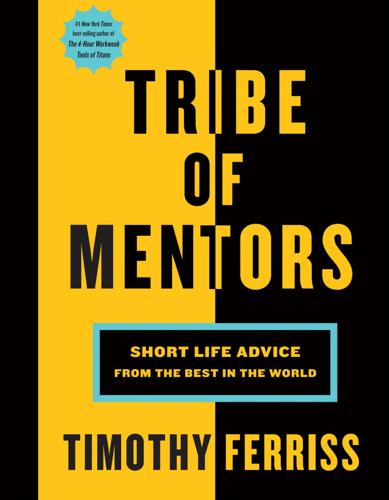
Tribe of Mentors: Short Life Advice From the Best in the World
by
Timothy Ferriss
Published 14 Jun 2017
It is incredible to think that some of these imaginative ideas, such as living forever or turning into a robot, could actually happen. [For example,] in the book Ending Aging, Dr. Aubrey de Grey talks about his research into how we can stop the degeneration of cells, essentially finding ways to extend life. Ray Kurzweil talks about the law of accelerating returns, which states that fundamental measures of information technology follow predictable and exponential trajectories. For instance, in the ’70s, we had a computer that was the size of a room and cost $250,000, and now we have a computer the size of my hand that is much more powerful. In the end, it’s not just about rich people having technology; it’s about scaling it so that everyone can be a part of it.
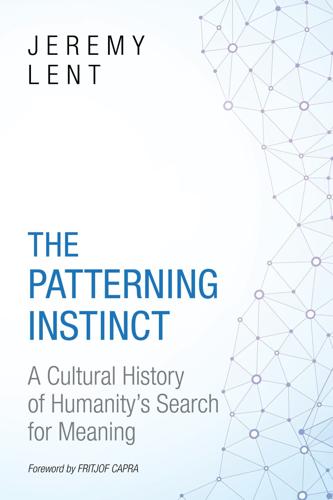
The Patterning Instinct: A Cultural History of Humanity's Search for Meaning
by
Jeremy Lent
Published 22 May 2017
“There will be no distinction, post-Singularity, between human and machine or between physical and virtual reality,” Kurzweil declares. He argues that the Singularity is much closer than most people imagine, setting its date at 2045. “The nonbiological intelligence created in that year,” he asserts, “will be one billion times more powerful than all human intelligence today.”51 Kurzweil bases his prediction on his “law of accelerating returns,” under which technological advances keep accelerating exponentially. Until when? In Kurzweil's model, it just doesn't stop. Even the Singularity is just one stage toward something even grander, a Big Bang–like explosion of intelligence on a vast, cosmic scale “until nonbiological intelligence comes close to ‘saturating’ the matter and energy in our vicinity of the universe.”

The Art of SEO
by
Eric Enge
,
Stephan Spencer
,
Jessie Stricchiola
and
Rand Fishkin
Published 7 Mar 2012
In this chapter, we conveyed some sense of what is coming in the world of technology, and in particular, search. Although the previous decade has seen an enormous amount of change, the reality is that it has simply been the tip of the iceberg. There’s a lot more change to come, and at an ever-increasing (exponential) rate. If the Law of Accelerating Returns holds, we’re in for a wild ride. In this fast-moving industry, the successful SEO professional has to play the role of early adopter. The early adopter is always trying new things—tools, tactics, approaches, processes, technologies—to keep pace with the ever-evolving engines. At the other end of the adoption curve are the laggards.

Global Catastrophic Risks
by
Nick Bostrom
and
Milan M. Cirkovic
Published 2 Jul 2008
The most famous accelerating trend is 'Moore's Law', articulated by Intel co-founder Gordon Moore in 1965, which is the observation that the number of transistors that can be fit on a computer chip has doubled about every 1 8 months since their invention. Kurzweil goes to great lengths to document that these trends of accelerating change also occur in genetics, mechanical miniaturization, and telecommunications, and not just in transistors. Kurzweil projects that the 'law of accelerating returns' from technological change is 'so rapid and profound it represents a rupture in the fabric of human history'. For instance, Kurzweil predicts that we will soon be able to distribute trillions of nanorobots in our brains, and thereby extend our minds, and eventually upload our minds into machines.